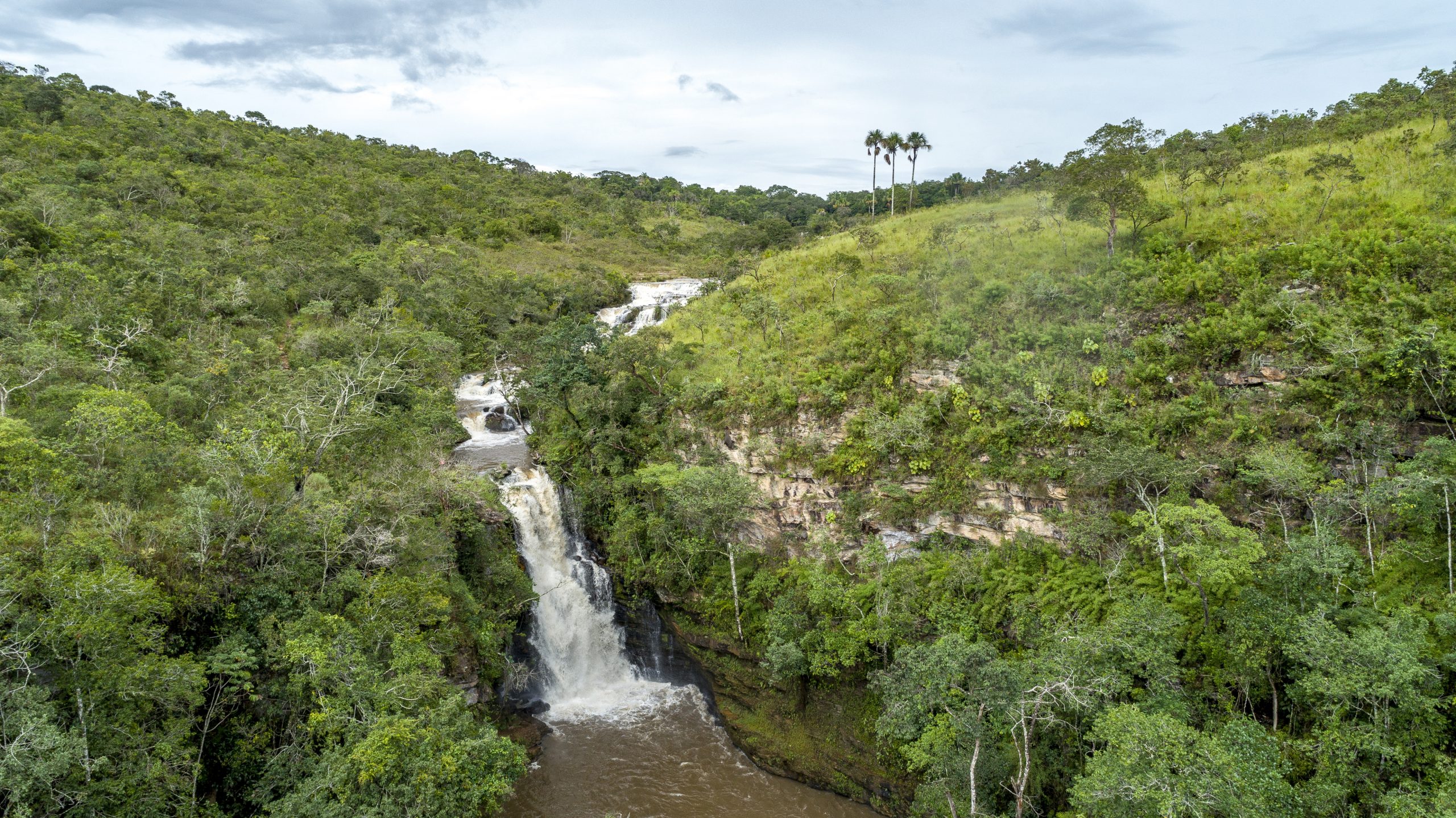
We are extremely lucky to live in a world where life, both animal and plant, exists in much of the globe. The two kingdoms coexist in harmony, often creating symbiotic relationships to help them better adapt to their natural habitat.
But Have you ever wondered how many species of plants there are? That is a very interesting question, without a doubt, that finally has an answer, although we do not know if it is definitive 😉.
How many species are there in the world?
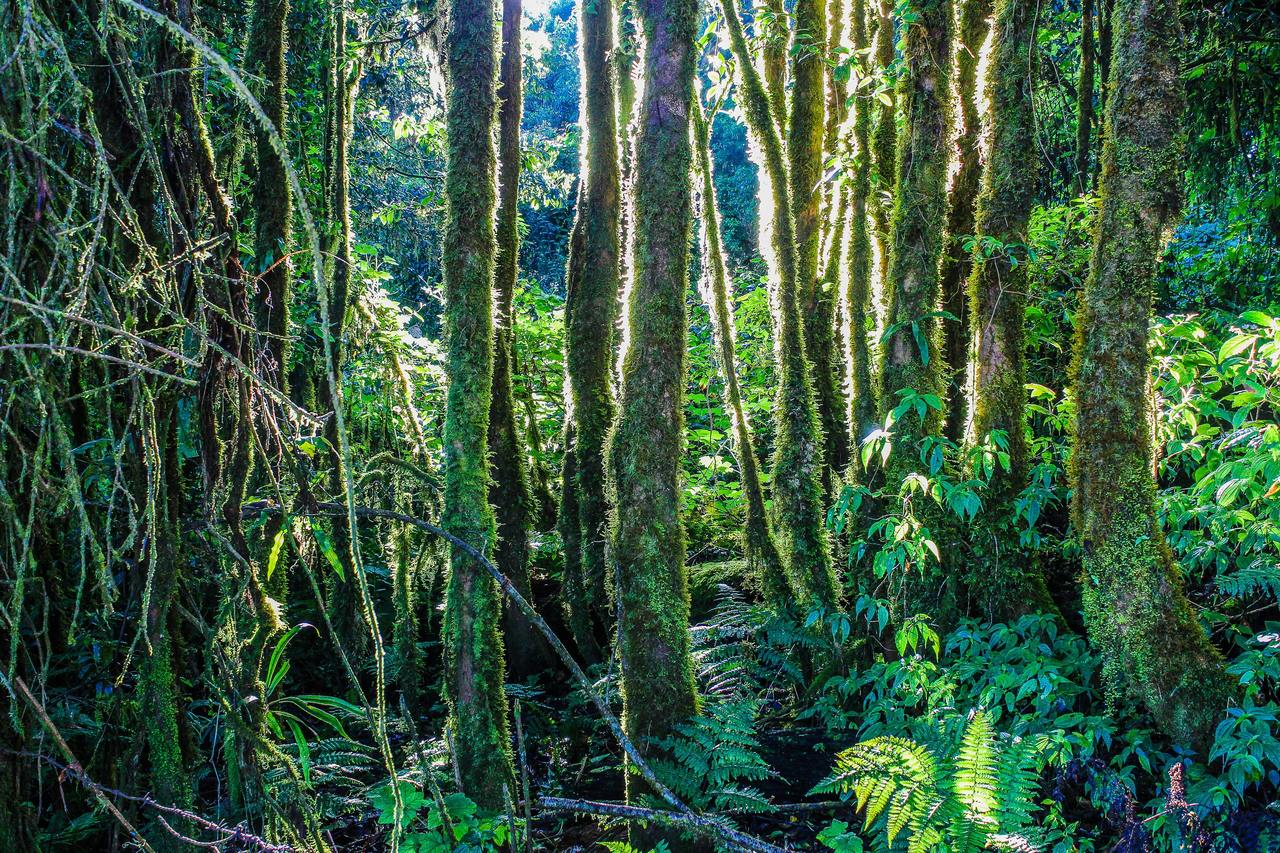
In 2011 a team of scientists wanted to know how many species had been discovered to date, and they succeeded. At the moment, it is known that there are 8,7 million, of which 6,5 million are terrestrial and 2,2 million aquatic. Of that incredible number, 7,77 million are animal species, 298.000 plant species and 611.000 fungi species. However, according to expert estimates, approximately 86% of terrestrial species and 91% of marine species have yet to be discovered.
What does this mean? Well, basically, what we know very little about the different forms of life that inhabit this beautiful planet, the only one to date that we know that harbors life. It is therefore not surprising that from time to time the discovery of a new animal or plant species is announced.
What types of plants are there?
There are of several types: trees, palms, conifers, shrubs, herbs, creepers, Ferns, mosses ... Each of them has its own characteristics that make them unique, but they all have something in common: they carry out photosynthesis; that is, they transform the sun's energy into food. In doing so, they release oxygen, without which none of us would be here today.
That is why we are going to show you some examples of plants, so that you too can be surprised at how wonderful the Plant Kingdom can be.
But what are its main features?
Algae
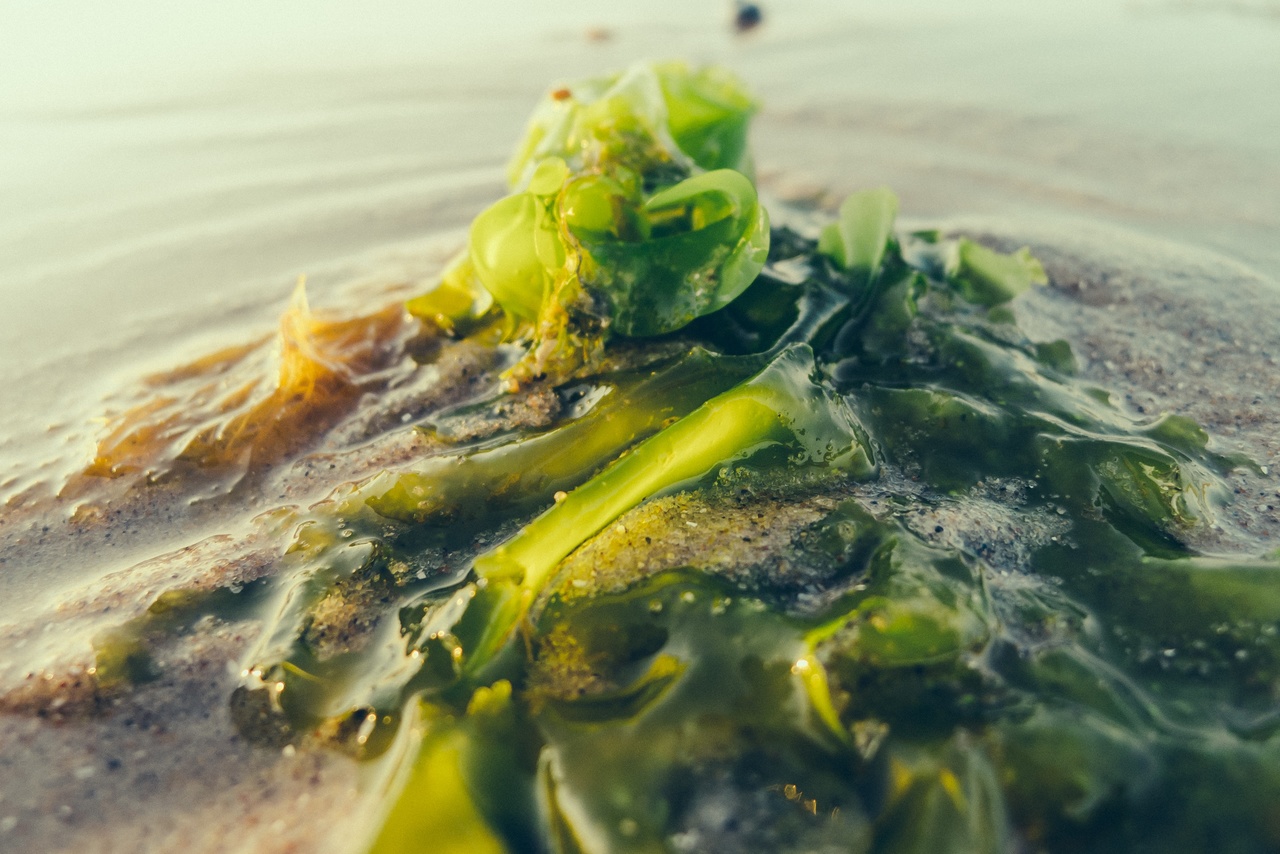
The evolutionary history of plants began with the appearance of algae, first the unicellular ones, which are made up of a single cell, and later the multicellular ones appeared. Where they live? Well, in the past they only lived in the sea, but as they developed, increasingly complex species appeared, producing stems capable of photosynthesis outside of sea water ... but very close to it.
It is believed that the first algae, the so-called Archaeplastida, appeared a little over 1.500 million years agoWhile the red algae, which were the ones that diversified to give rise to the species we know today, are from about 1.200 million years ago.
Types of algae species
These are some:
chondrus crispus
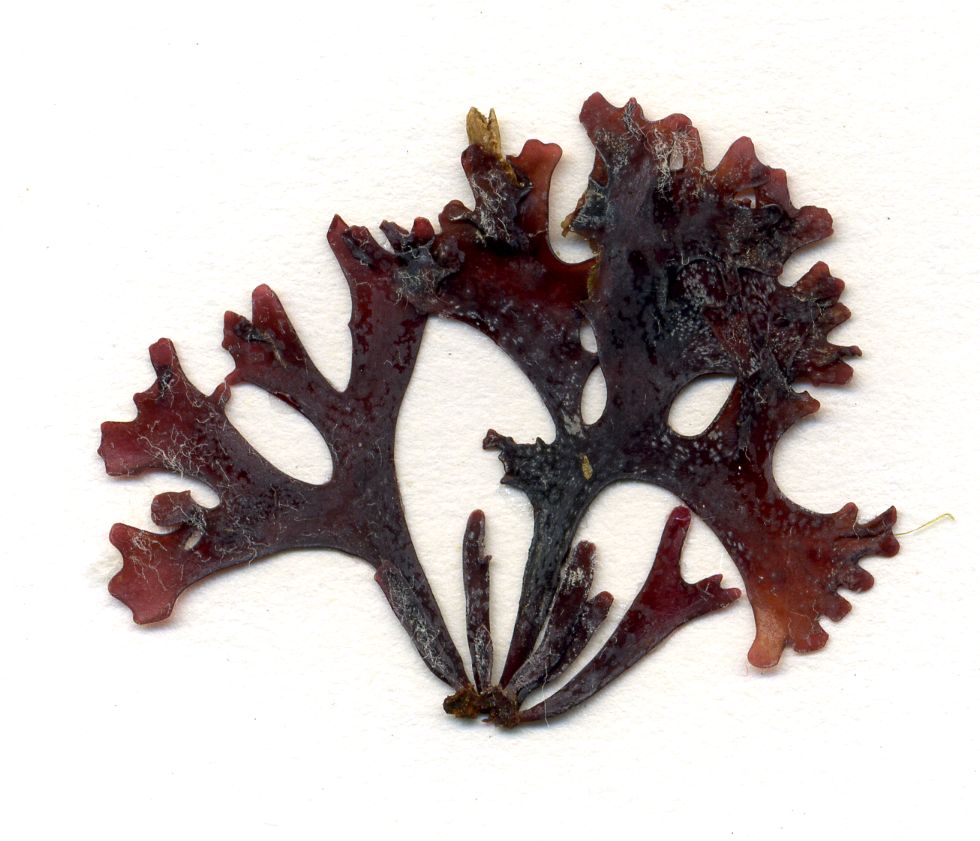
Image - Wikimedia / Chondrus crispus
Al chondrus crispus It is known as Irish moss and is a type of red algae native to the Atlantic coasts of both Europe and North America. Its false leaves arise from a highly branched stem, and all of it is reddish.
ulva lactuca
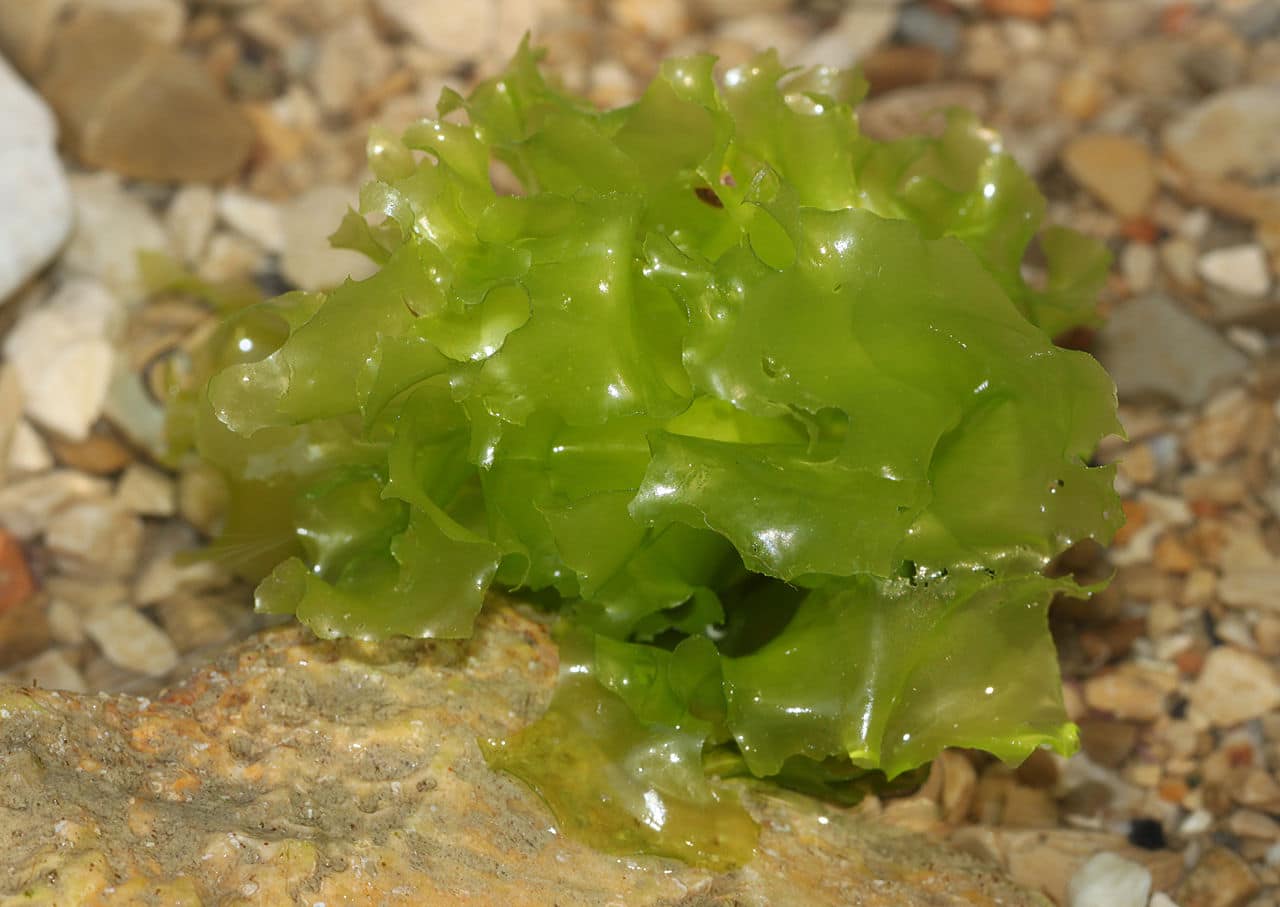
Image - Wikimedia / H. Krisp
Known as lamilla or sea lettuce, the ulva lactuca It is an alga with a laminar green thallus (false leaf in the form of a sheet), lobed and with two layers of cells that is fixed to the soil by means of rhizoids. It grows to measure 18cm in length by more than 30cm in width.
Musgo
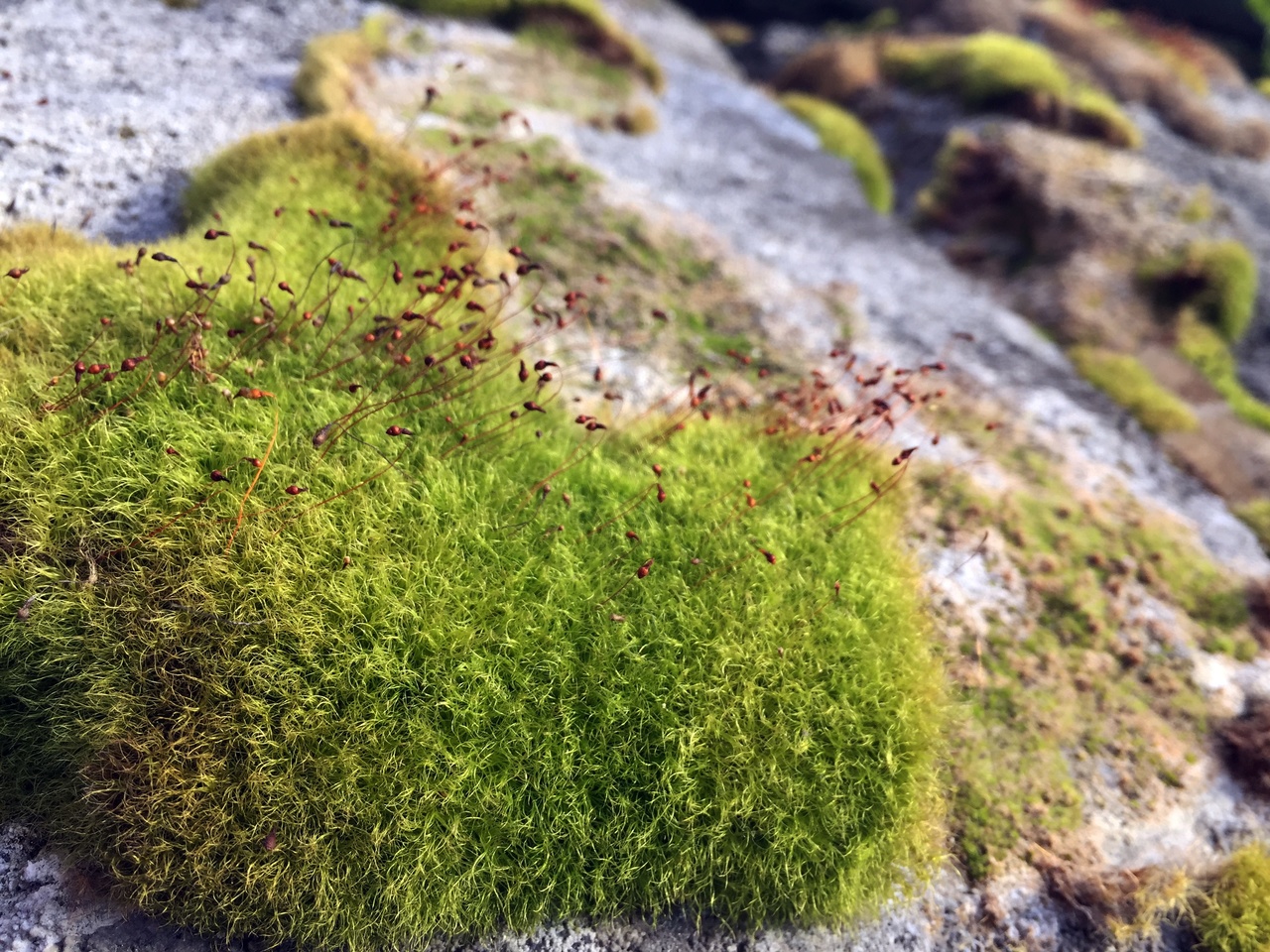
Mosses, whose maximum height is 10 centimeters, are very curious plants. Strictly speaking they are a type of non-vascular bryophyte plants (that is, they do not have glasses inside, unlike all the others that we are going to see), made up of green leaves ... only if it rains.
For this reason, we find them on the roofs of houses, rocks, walls, walls, tree trunks, ... wherever there is a little water for a more or less prolonged time.
Types of moss species
These are some:
Polytrichum strictum
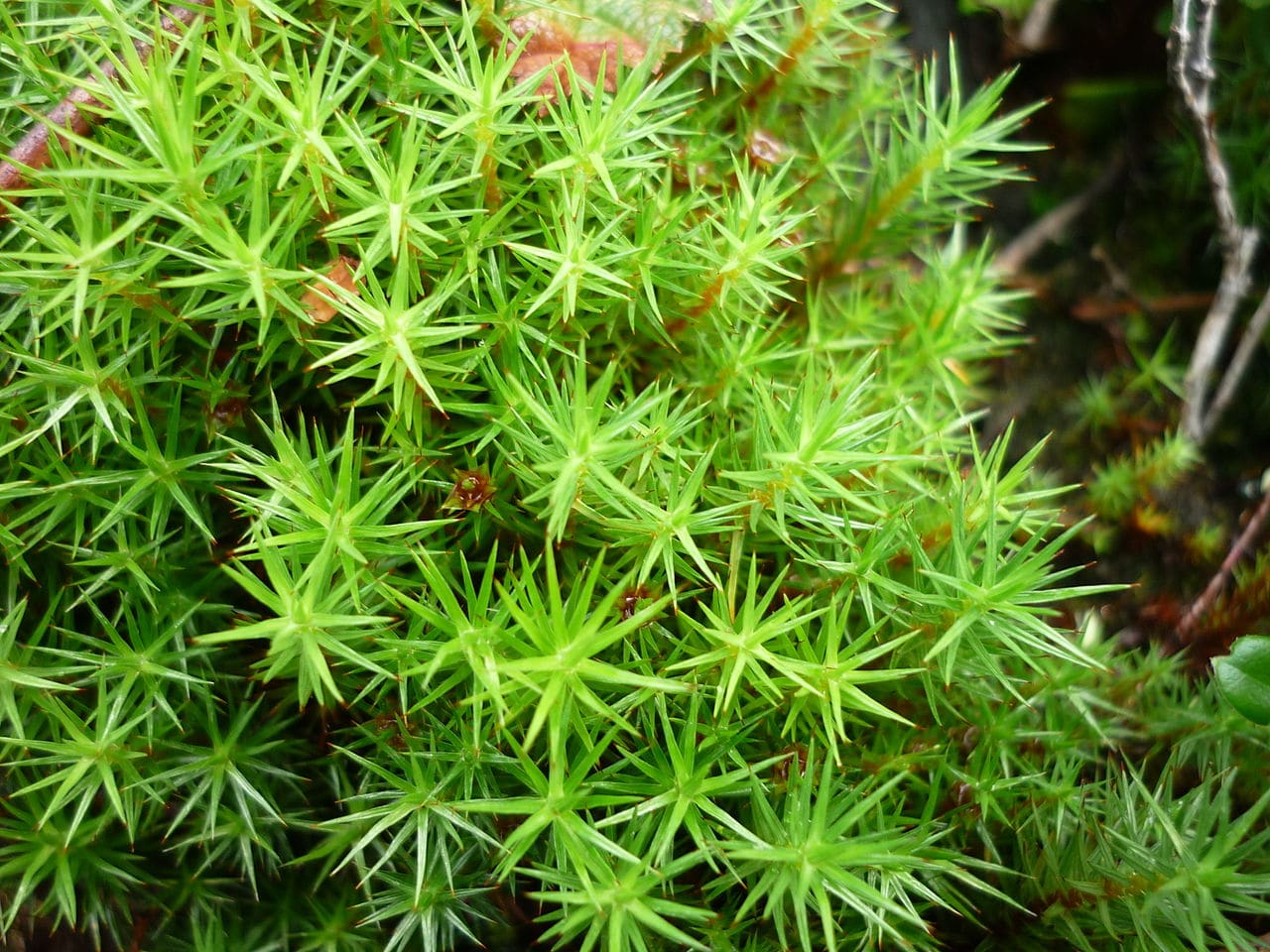
Image - Wikimedia / Helenaanna
Al Polytrichum strictum It is known as hair moss, bird wheat or pigeon wheat, and it has numerous hairs that cover it. The leaves are pointed and are arranged in a straight spiral around a rigid stem, which reaches a height of 4 to 20 centimeters.
sphagnum fallax
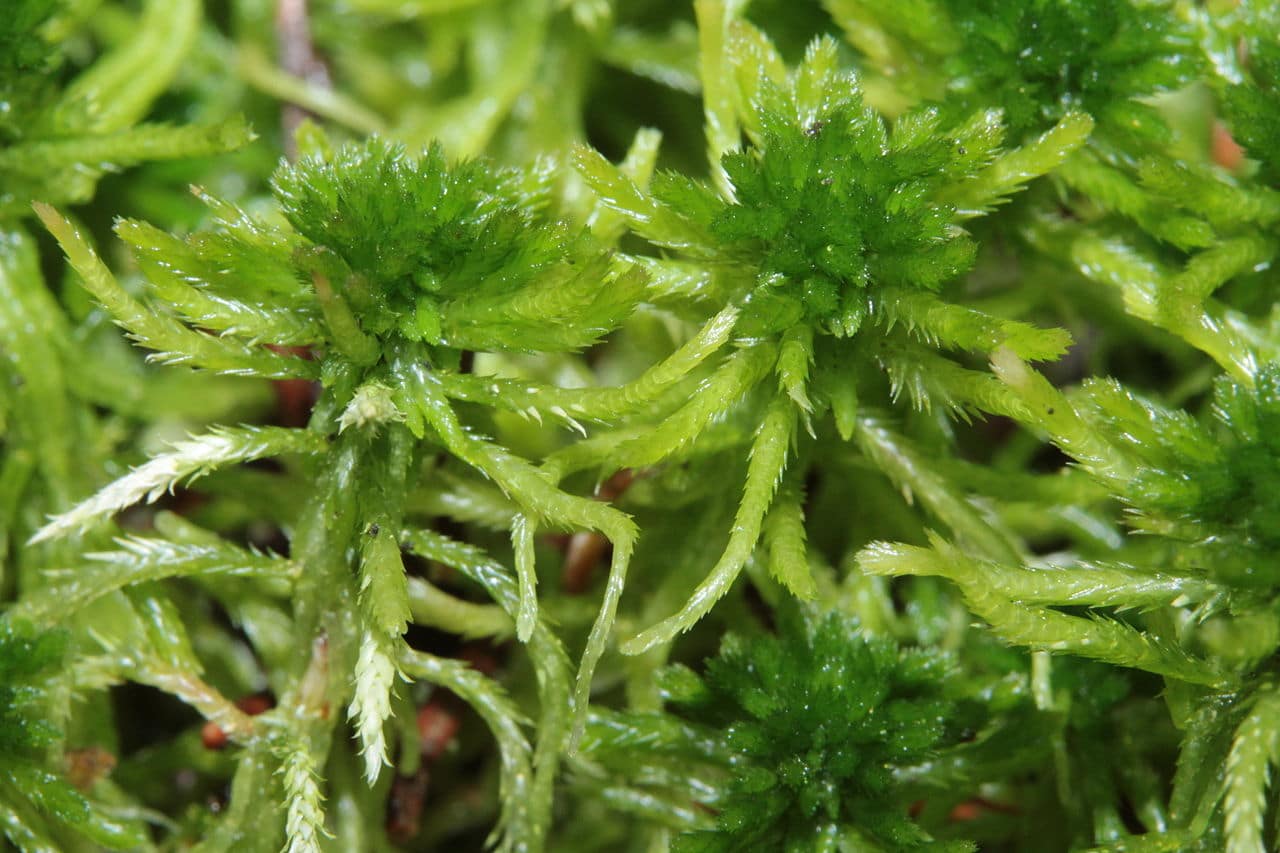
Image - Wikimedia / Helenaanna
Known as sphagnum moss, or sphagnum, the sphagnum fallax It is a plant native to the Northern Hemisphere, which consists of a main pseudostem from which branches arise in fascicles, with 2-3 extended branches, and 2-4 hanging green branches.
Herbs
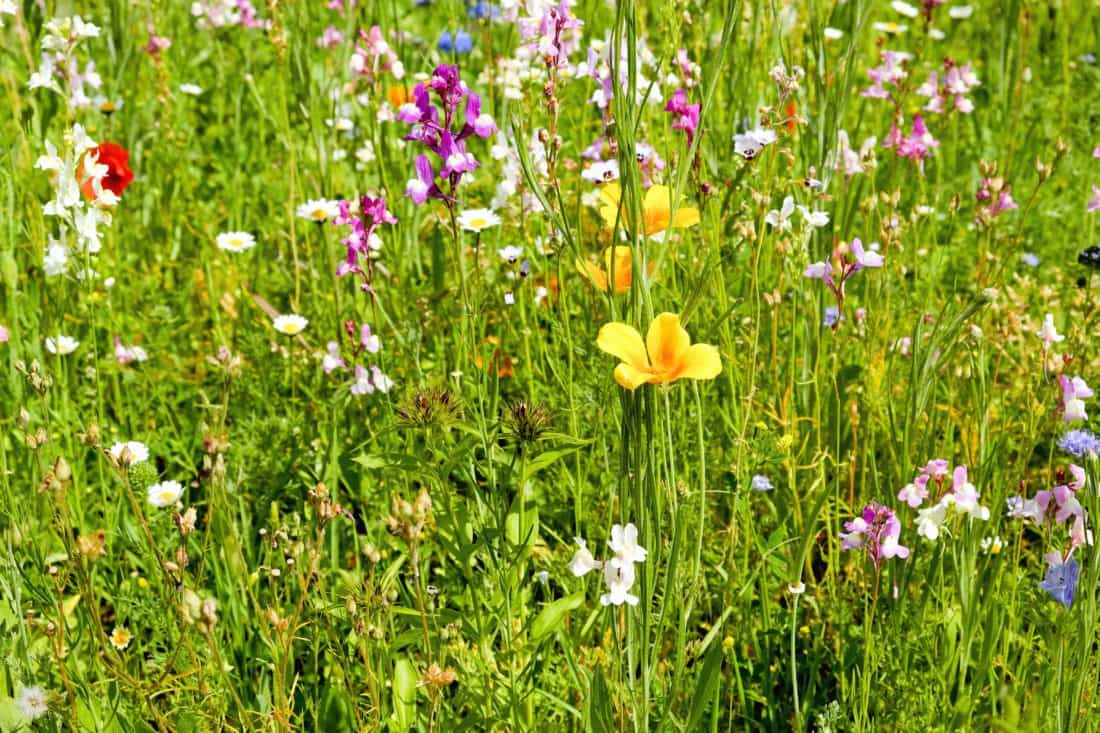
When we speak of herbs we usually refer to the "weed", or the grass of the field. But, what if I told you that they can be classified according to their type of leaf, and that that is just a differentiation from many others that can be made? Don't worry, I'm not going to complicate it:
There are two types of herbs: narrow-leaved, which are graminoids (grasses) like all those that can be used for grass for example, and the broad-leaved ones that are called forbias. Within this last group we find the megaforbias or giant herbs, which is where the palms or the muses (banana trees).
Their life expectancy therefore varies greatly:
- Annual: germinate, grow, flower, fruit and die in a year (somewhat less actually). Examples: corn, melon, pea.
- Biannuals: during the first year they germinate and grow, and the second they bloom, produce fruit and die. Examples: foxglove, parsley, spinach or carrot.
- Vivacious or perennial: are those that live 3 years or more (certain palm trees even exceed a century of life). Depending on the type of plant species, it can start to flower as early as the first year of life, or much later. For example, the date palm produces its first flowers at 5-7 years if conditions are favorable, but the geranium a few months after planting can flower (I speak from experience). Examples: carnation, gazania, bird of paradise, palm trees, bromeliads and bulbous, Among others.
Herbaceous plant species
We show you the following:
Cucumis melo

El Cucumis melo, known as melon, and is an annual cycle herbaceous native to Iran, Anatolia, and the Caucasus. Develops creeping stems, with palmate leaves that produce yellow flowers and, behind them, fruits that are spherical to ellipsoidal berries suitable for human consumption.
digitalis purpurea
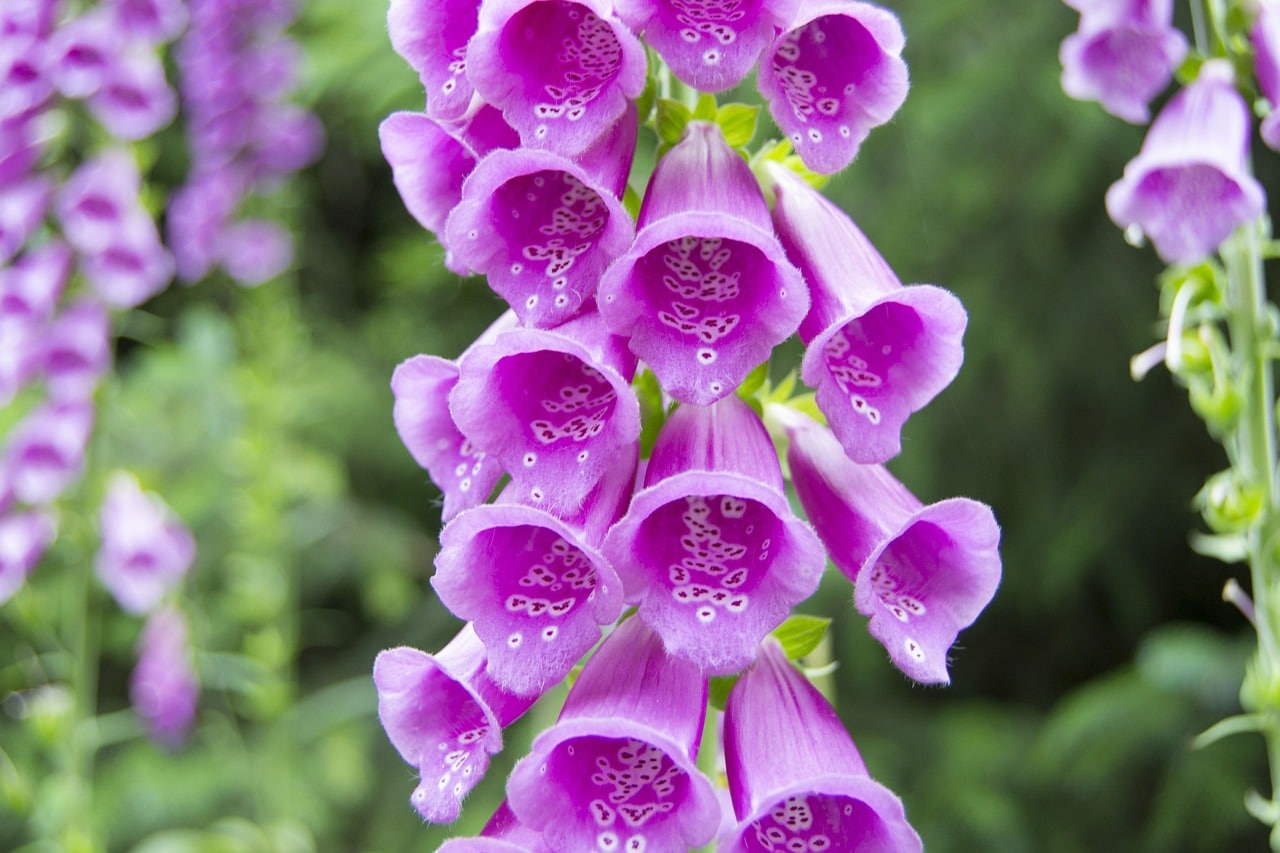
The species digitalis purpureaKnown as foxglove, digitalis, suckers, viluria or gauntlet, is a biennial herb native to Europe, northwestern Africa, and Central and Western Asia. It develops a long stem between 0,50 and 2,5 meters high, from which toothed, simple and alternate leaves sprout. The flowers are grouped in hanging clusters and are tubular, deep pink on the outside and purple on the inside.
Gazania freezes
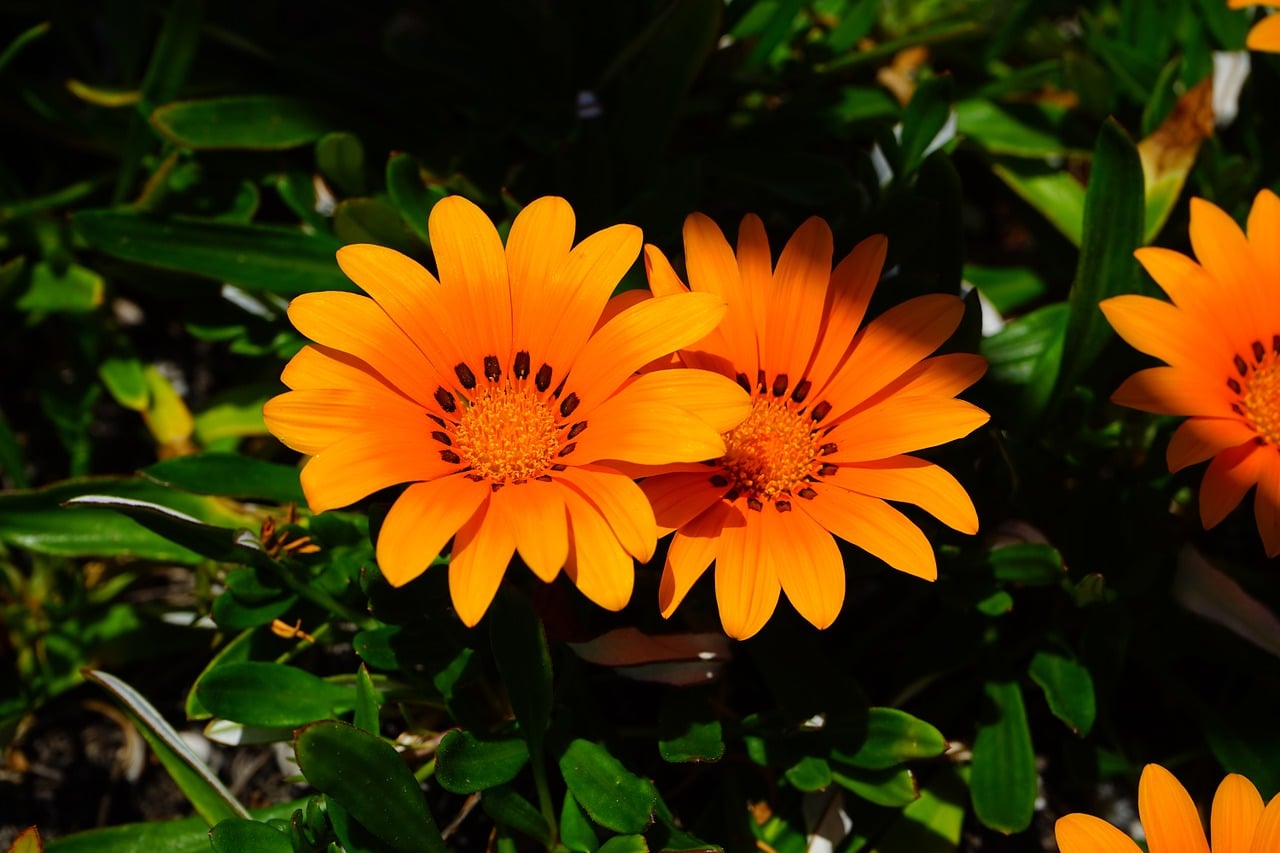
La gazania o Gazania freezes, is a perennial or perennial plant native to South Africa and Mozambique that reaches a maximum height of 30 centimeters. The leaves are elongated, green on the upper side and whitish on the underside. The flowers resemble daisies, opening only when there is sun.
ferns
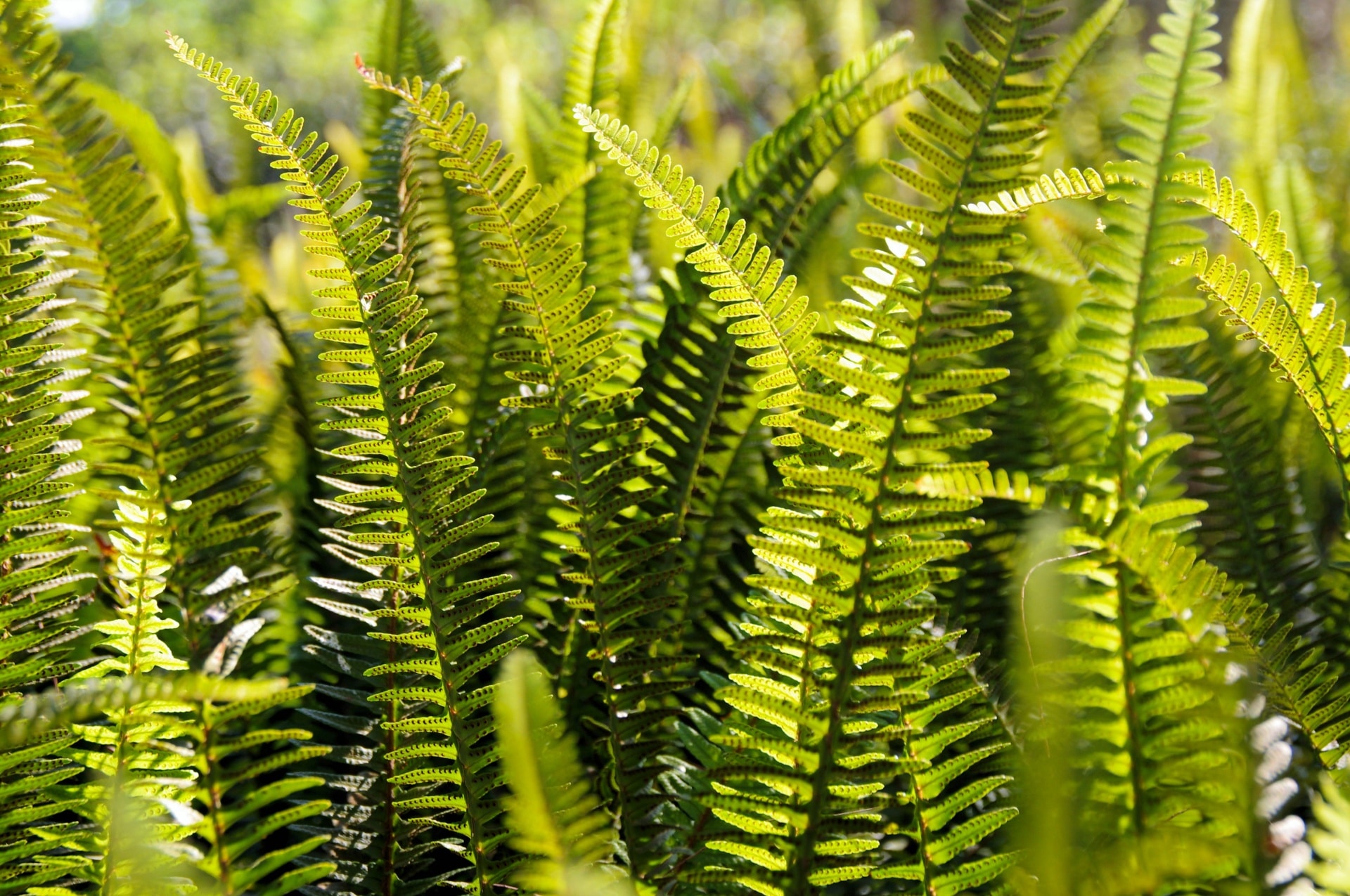
Ferns are considered living fossils, since they appeared about 420 million years ago. These are a type of vascular plants that do not produce seeds (but spores), rhizomatous, and with large leaves that are known as fronds or megaphils, normally pinnate, greenish or variegated in color. The height is variable depending on the species: they can grow only up to 20 centimeters in height, or they can exceed 5 meters as tree ferns which, as the name suggests, are those that have a tree shape by developing a false trunk.
Its natural habitat is usually the forests and tropical jungles above all, under the shade provided by the trees, and where the environmental humidity is high.
Fern species
We show you these:
Cyathea arborea
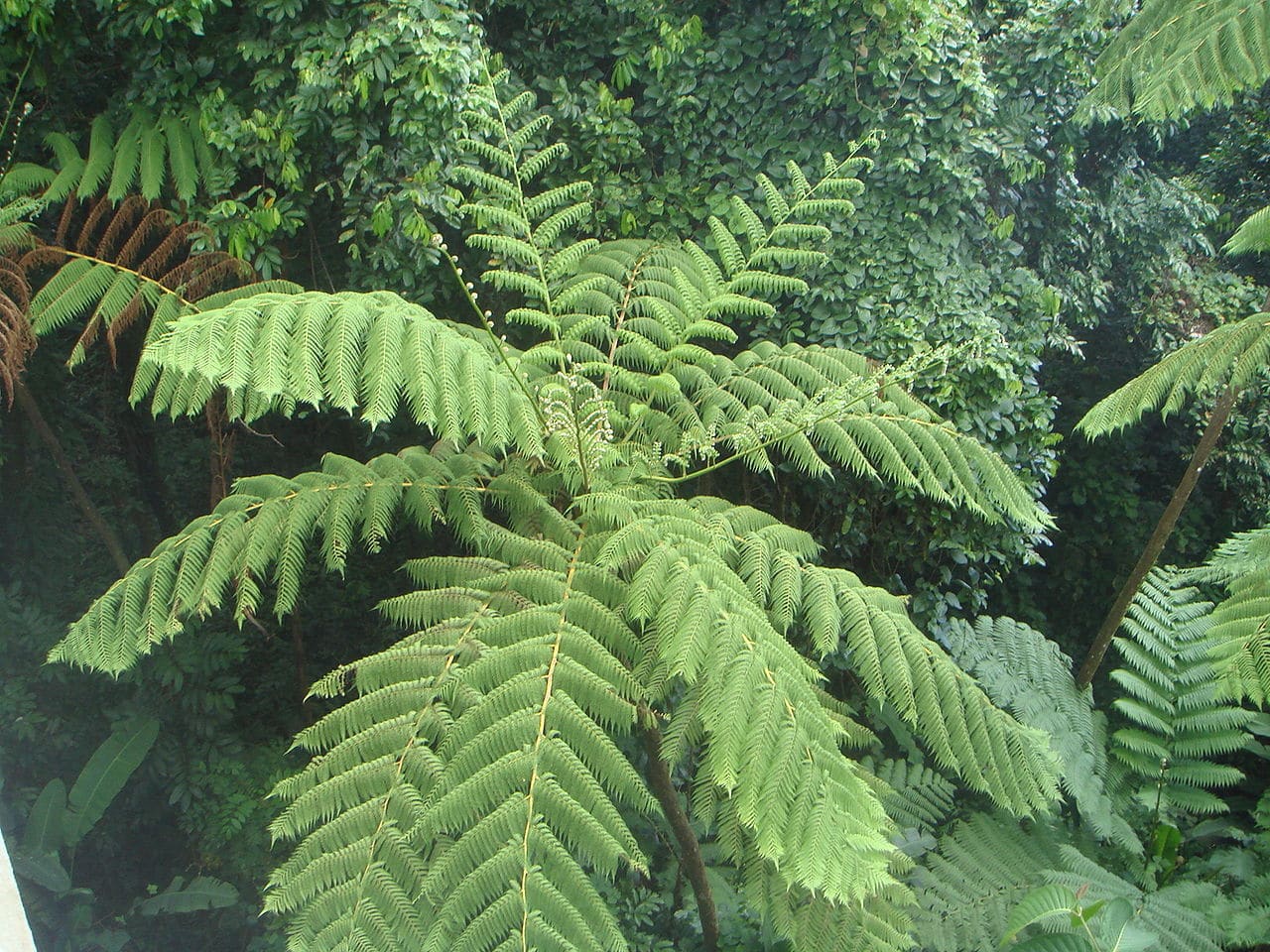
Image - Wikimedia / Xemenendura
Known as the giant fern or shrimp stick, the Cyathea arborea It is a species of evergreen fern that reaches a height of 9 meters. It is native to the plains and forests of the Antilles, and develops a crown composed of a minimum of ten pinnate and spineless fronds (leaves).
Pteris cretica
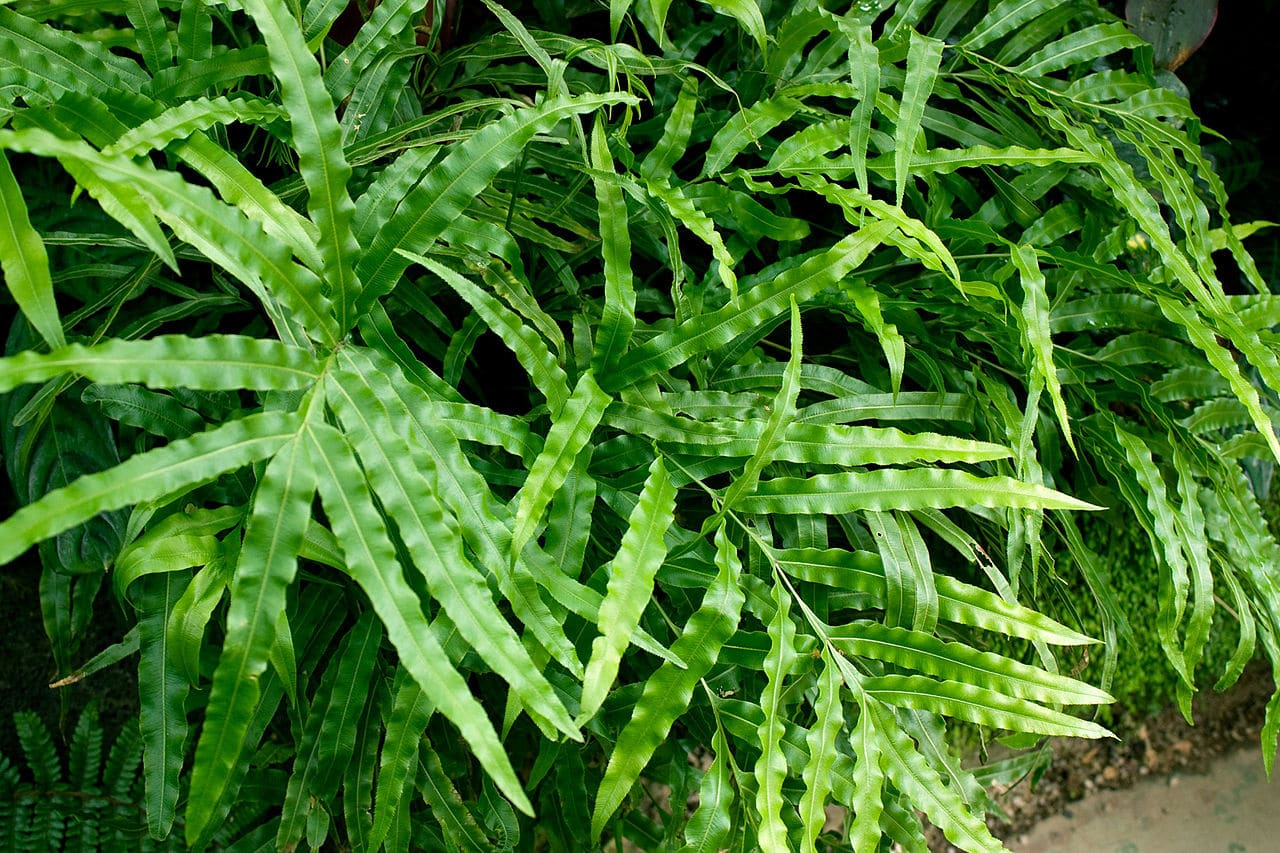
Image - Wikimedia / Rexness from Melbourne, Australia
El Pteris cretica It is a fern native to America with a somewhat creeping rhizome, which reaches a height of between 15 and 80 centimeters. The fronds are pinnate, green with a white center.
conifers
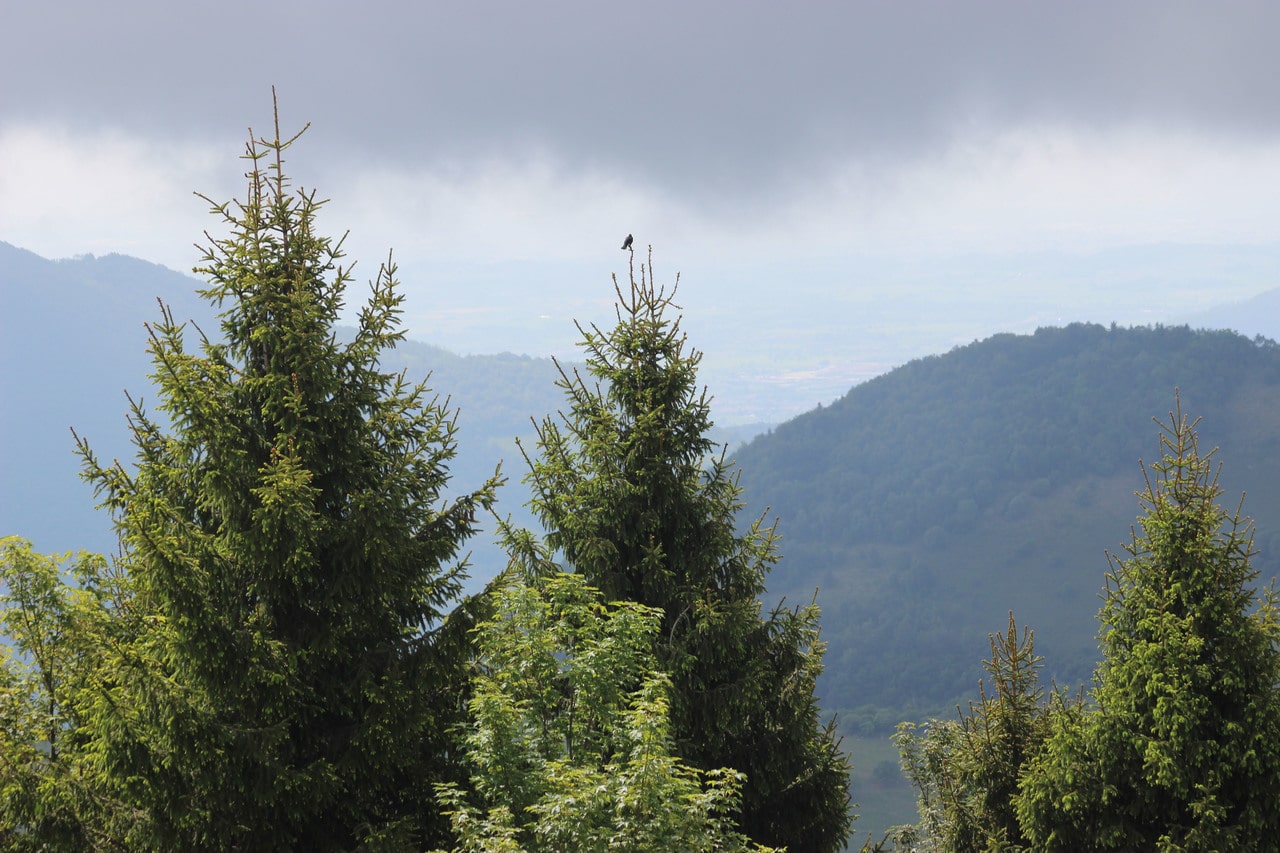
Conifers are very pretty plants. They do not produce showy flowers, but that is precisely one of the characteristics that make them unique. They are one of the oldest types of plants, appearing on Earth about 300 million years ago.
This group of plants usually has a straight trunk and is often very tall, exceeding 30 meters in height. Its crown can be pyramidal or rather rounded, composed of more or less short elongated leaves, greenish in color and with a perennial, semi-deciduous or deciduous behavior. Its fruits are what we mistakenly call pineapples (not to be confused with the pineapple plant, whose scientific name is Pineapple comosus which is a bromeliad), but they can be cones.
Having been evolving for so long, and having overcome glaciations and all kinds of natural phenomena, today we can enjoy the beauty of the Arctic fir forests, the longevity turned into cracks in the twisted trunk of the Pinus longaeva in the mountains of the USA, the incredible heights of the giant redwoods of America, or the delicious pine nuts of the Pinea pine, an autochthonous species of the Mediterranean.
Coniferous plant species
We show you the following:
Cupressus sempervirens
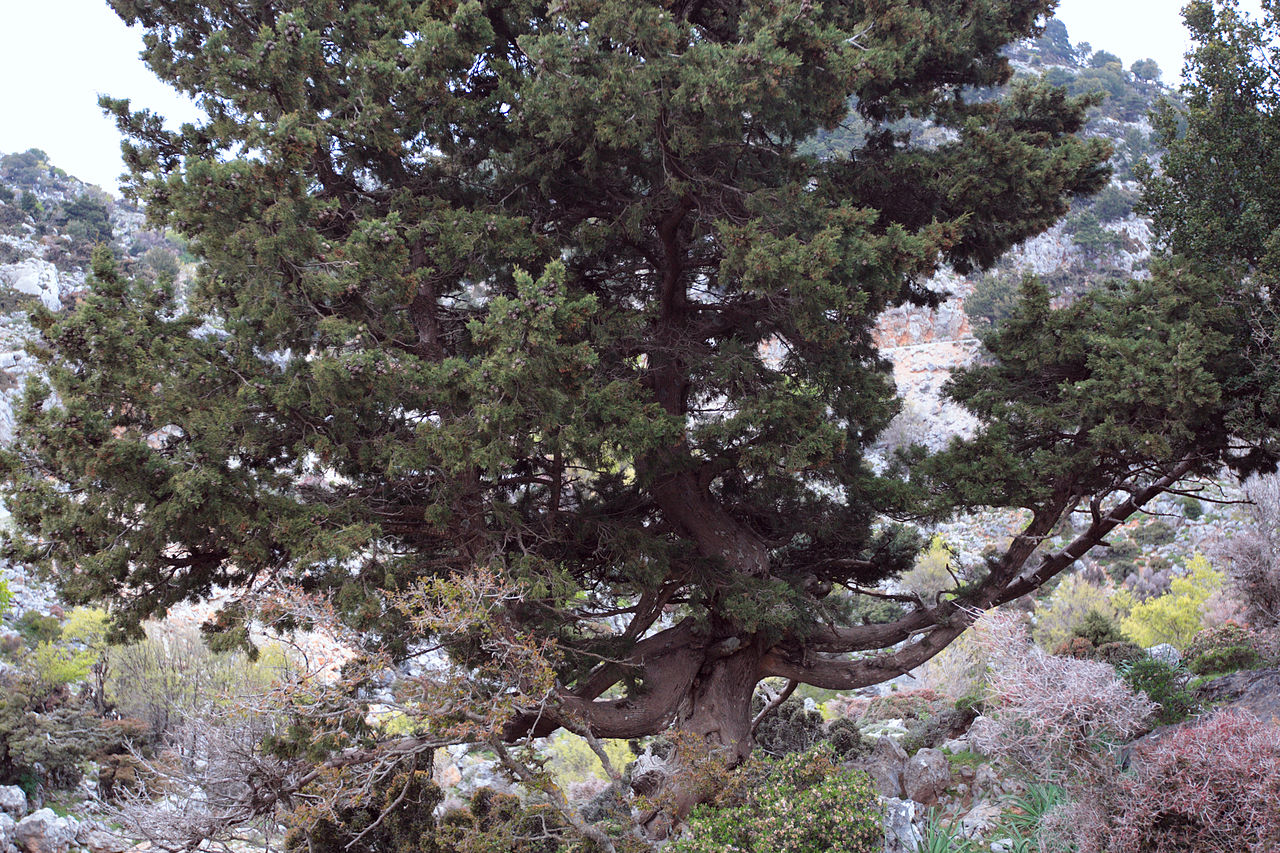
Image - Wikimedia / Jerzy Strzelecki
Known as the common cypress or Mediterranean cypress, the Cupressus sempervirens it is an evergreen conifer native to the eastern Mediterranean. Reaches a height of 30 meters or more, with a cup that can be pyramidal or horizontal. The leaves are scaly, and form very dense, dark green foliage. Its life expectancy is about 1000 years.
Pinus longaeva
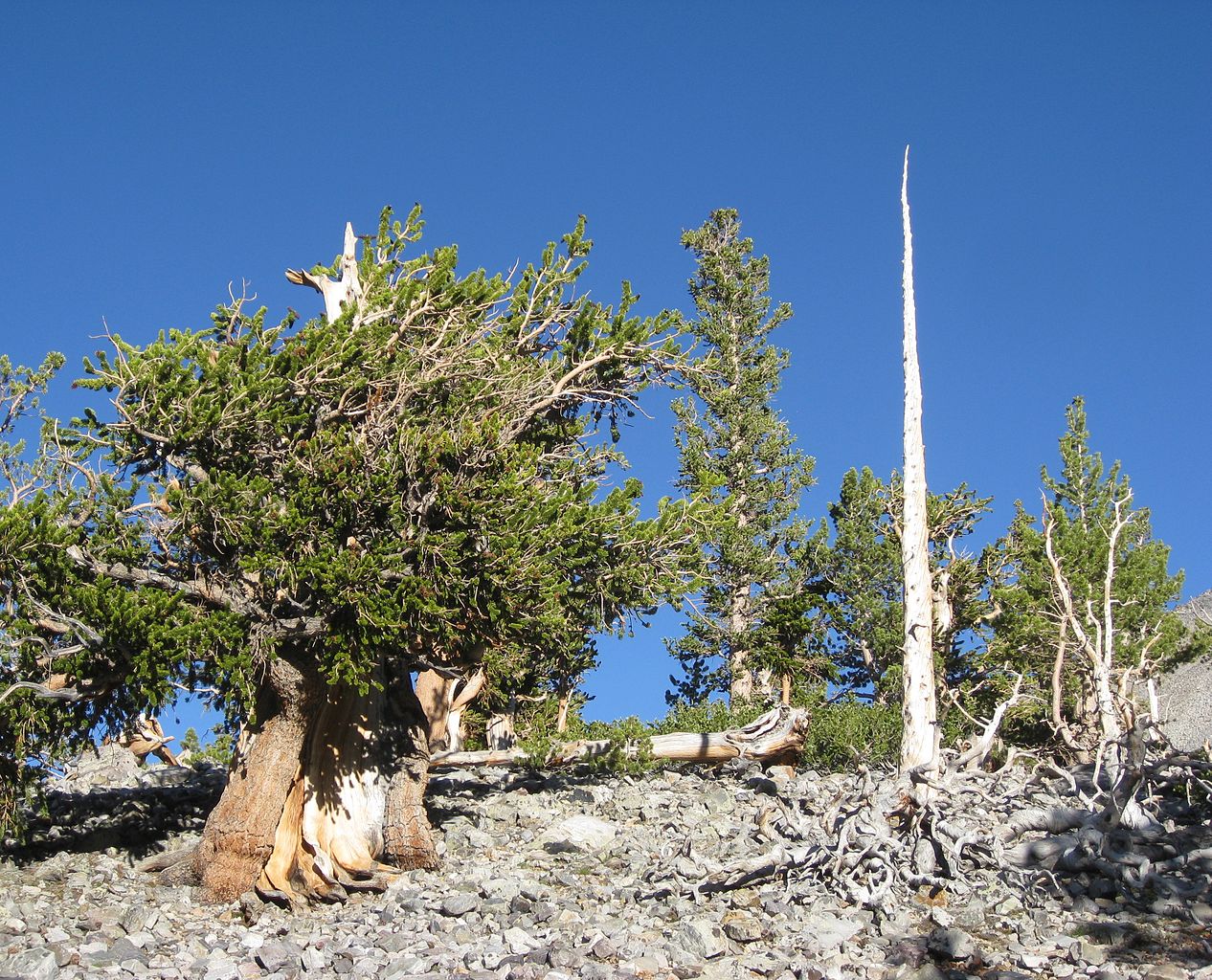
Image - Wikimedia / J Brew
El Pinus longaeva, known as long-lived pine, is native to the mountains of the southeastern United States. It grows between 5 and 15 meters, with a trunk diameter of up to 3,6 meters. The leaves are acicular, rigid, up to 4cm long, and dark green in color. Its life expectancy, as the name suggests, is very long: on August 6, 1964, a graduate student cut Prometheus, a specimen that was more than 5000 years old.
Trees
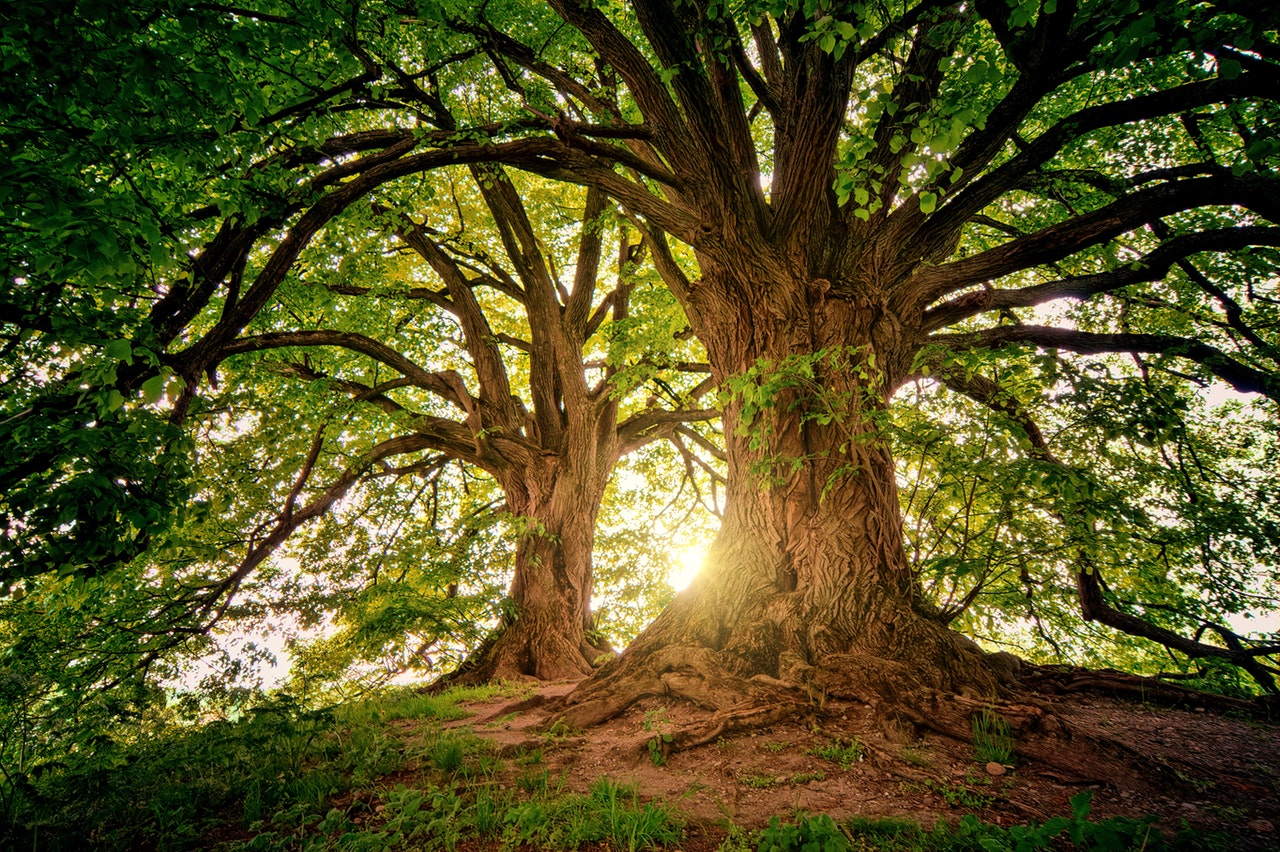
Trees are a type of plant that has a woody stem called a trunk with a branched crown which has a clear main branch. The height they reach varies according to the species, but experts usually agree that they have a minimum height of 5 meters and a trunk thickness of at least 10 centimeters.
If we talk about the leaves, they can be deciduous, semi-deciduous or perennial; large, medium or small; simple or composed of different leaflets (leaflets), ... and normally green in color, but can also be reddish-brown (Fagus sylvatica var. atropurpurea for example it has them of that color).
Where they live? All over the world, except in extreme places. There are those that live in dry tropical forests, such as the acacia tortilis or the Adansonia digitata (baobab); others who prefer more temperate climates with cold winters, like the vast majority of arces or the oaks; others, on the other hand, like very hot summers and mild temperatures in winter, such as carob or almond.
'Modern' trees began their evolution in the Cretaceous period, that is, about 145 million years ago. At that time they were one of the protagonists of the birth of the angiosperm plants, that is, plants with showy flowers that, in addition, protect their seeds in some way so that they are not so exposed to inclement weather.
Are conifers considered trees?
Yes, but I wanted to put them separately for the following reasons that I am going to explain so that there are no misunderstandings:
- Conifers began to evolve in the Triassic period, as we have said before about 300 million years ago. At that time, plants with cheerful flowers did not exist yet, and seeds from the first moment that fell (and fall) to the ground must germinate quickly as soon as the opportunity to survive arises.
- Modern trees are all angiosperm plants; the conifers instead are gymnosperms. There is only one species of primitive tree that is more related to conifers than to modern trees: the Ginkgo biloba.
- Tree leaves are 'weaker' in comparison than conifers. A maple leaf (for example) would not survive the harsh Arctic winter.
- The growth rate between one and the other is, in general, very different. Conifers tend to be slower, while trees are somewhat faster.
- Life expectancy is also very different. A plant, the slower it grows (and as long as that slowness is part of what its genetics dictates) lives longer than one that grows fast. That's why we can find redwoods 3200 years old, but it is very difficult to find a tree that is older than 1000 years. Both ages are surprising and impossible for humans to reach, but without a doubt I think this is something that should be taken into account when talking about trees and conifers.
Tree species
Some more representative species are:
Citrus x sinensis
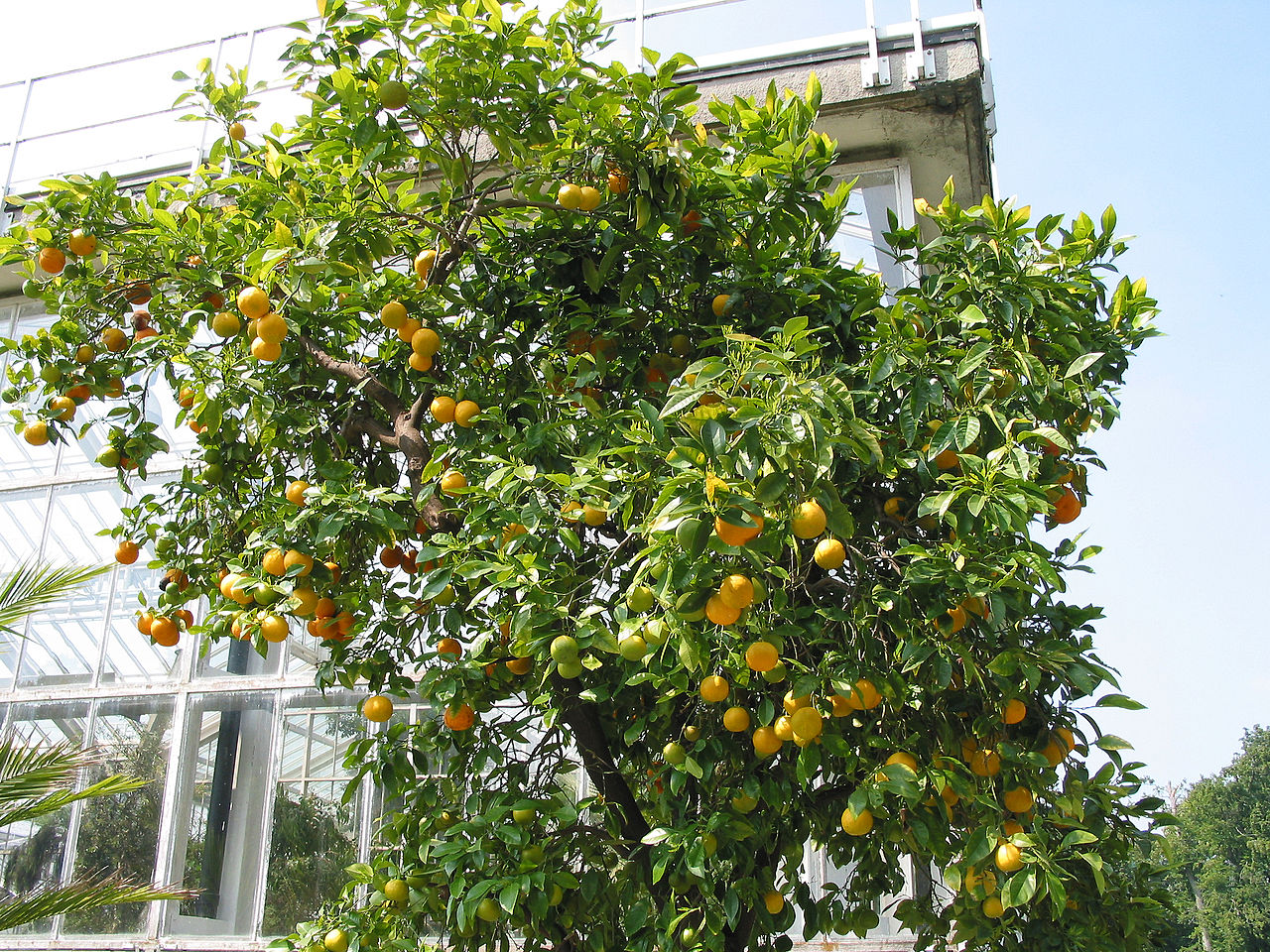
Image - Wikimedia / Jean-Pol GRANDMONT
Popularly called Orange tree, Citrus x sinensis It is an evergreen tree native to India, Pakistan, Vietnam, and southeastern China. Grows to a maximum height of 10 meters, with a short trunk and a crown composed of branches from which large, simple, dark green leaves sprout. The flowers are small, about 1cm, white and very fragrant. And the fruits are rounded, orange in color, and with edible pulp.
Almond
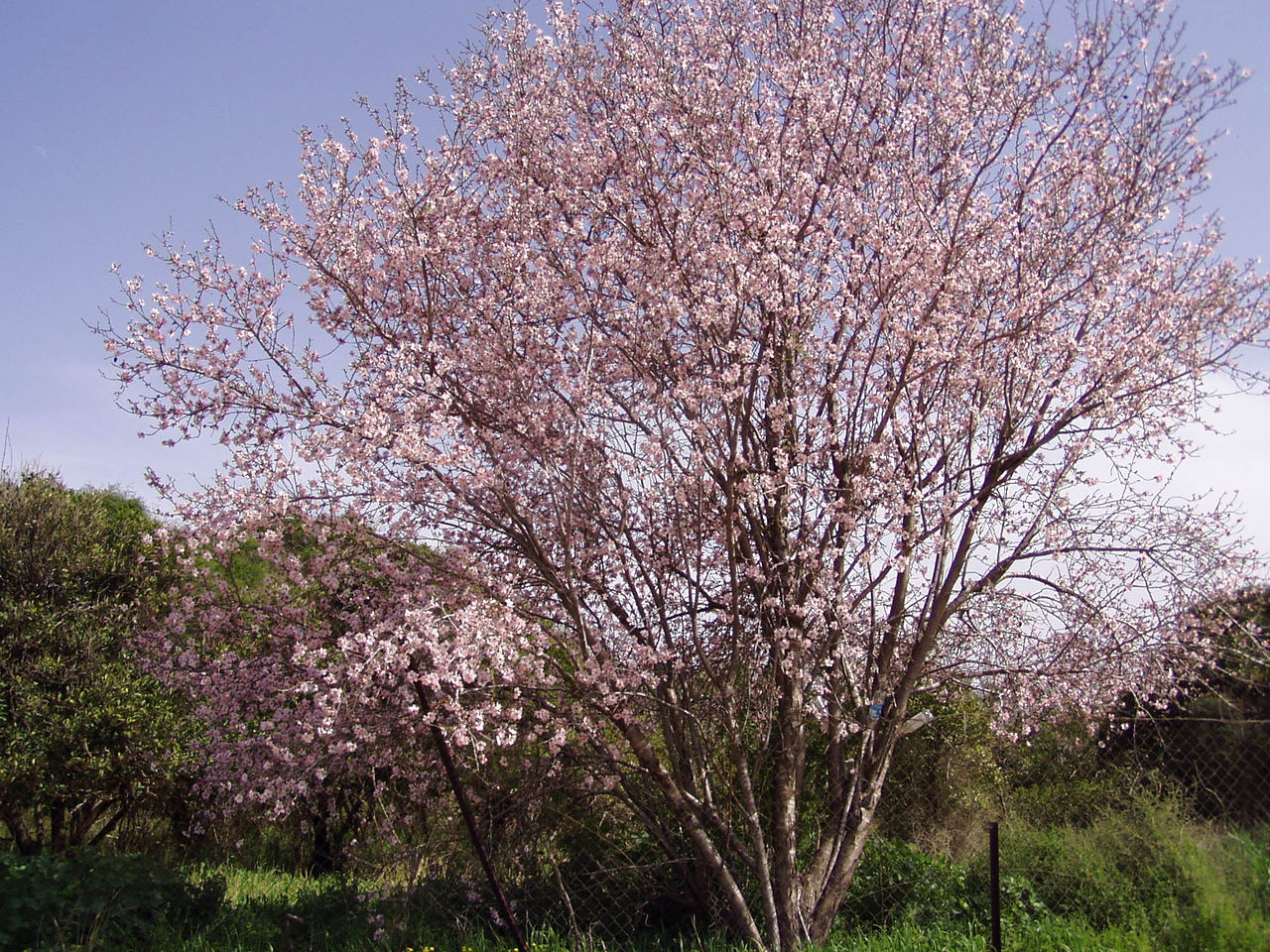
Known as almond, Almond It is a deciduous tree native to Eastern Europe, Western Asia, and North Africa. Reaches a height of 10 meters, with a slightly twisted trunk and a wide and almost rounded crown. The leaves are ovate, with a serrated margin, and green in color. The flowers are white or pink, 1-2cm long, and odorless. The fruits are almonds, which are about 1-1,5 cm long, and are made up of a hard shell - it can be broken easily by hitting it with a stone - brown in color that protects a single seed, this being last edible.
Shrubbery

Let's move on to the bushes. These are plants that, unlike trees, they do not have a single main stem, but have several that arise from the same base. As for their height, they measure up to 5 meters, although there are many who do not exceed one meter.
The leaves can be deciduous or evergreen, small or large, and of very different colors (green, reddish, purple, variegated, tricolor, ...). In nurseries we find many that produce really beautiful flowers, such as azalea for example, or camellia.
Shrubs that are not so
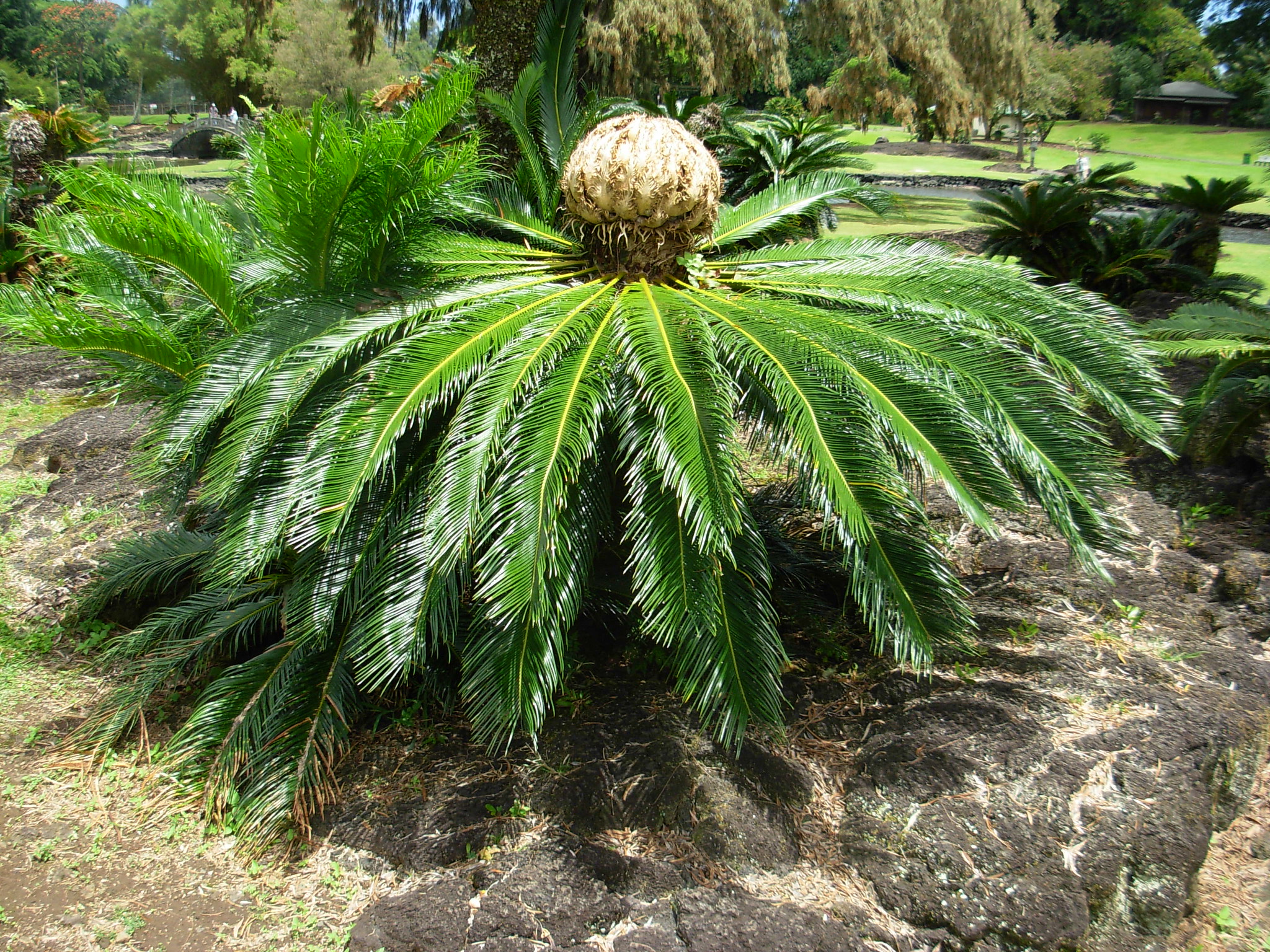
Image - Flickr / brewbooks
There are some plants that, although they fulfill a good part of these characteristics, cannot be considered abustos as such. They are called subshrubs, which are those plants that in popular language are known as woody bushes (or simply bushes) or shrubs. Unlike the bushes we will say true, these have very short stems, and look more like a herbaceous plant what else, like the lavender essence or thyme.
To complicate things a little more, it is customary to include in this group some plants that do not have much relation. Surely for comfort and practicality. For example, cycads, that is, all those Cycas, Dioon, Encephalartos, and the like. Why do I say that these are not too well classified within bushes?
Because the same thing happens with them as with conifers: they are very old plantsIn fact, remains dating back to about 280 million years have been found; they are gymnosperms (They do not protect the seeds nor do they produce showy flowers); and its life expectancy is considerably longer than that of a modern shrub due to its slow growth rate: a Cycas revolutaFor example, provided the conditions are right, it can reach 300 years, while a common shrub is difficult to exceed 100.
Shrub-like plant species
We show you the following species:
Veronica ochracea
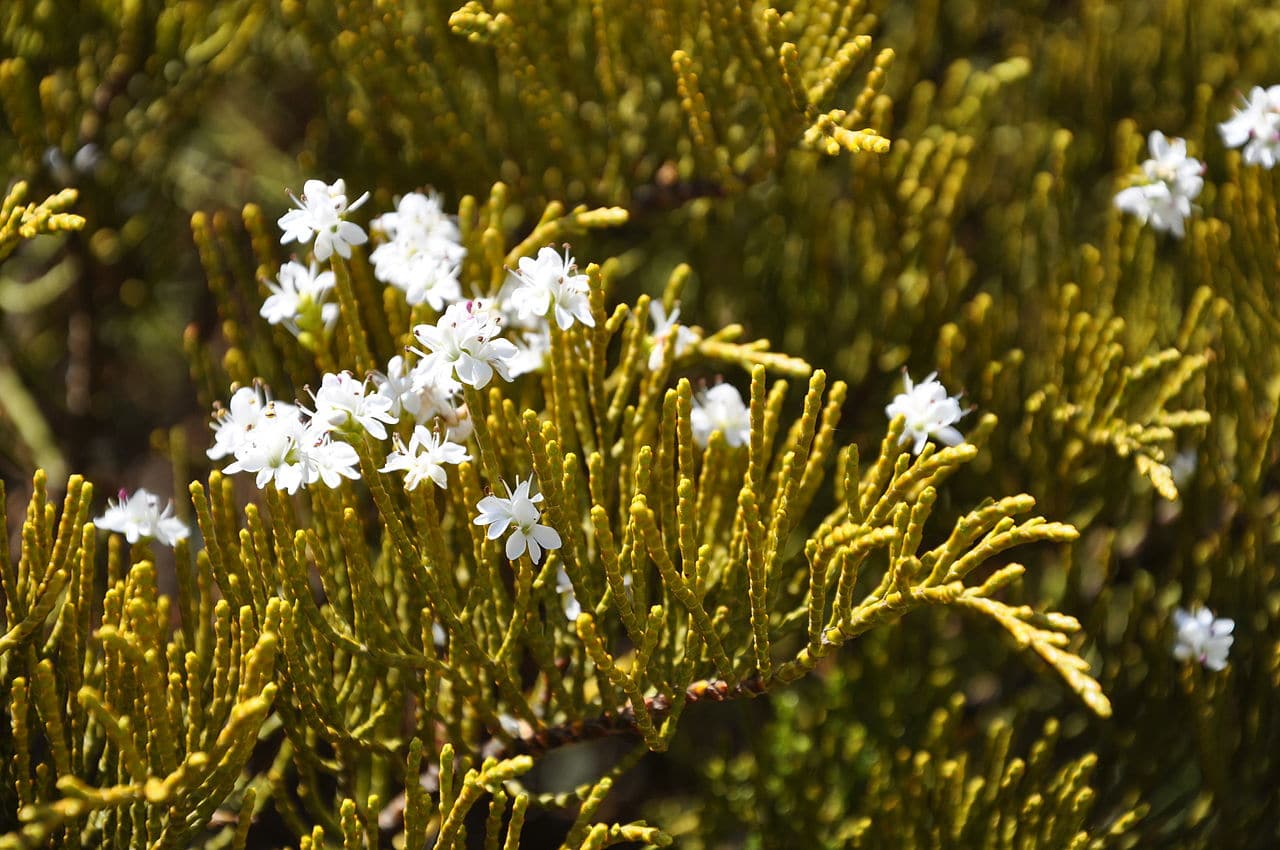
Now Veronica ochracea It is known as veronica or hebe, and it is an endemic evergreen shrub to New Zealand that reaches a maximum height of 2 meters. Its leaves are thin and long, green in color, and the flowers are grouped in white inflorescences.
Hibiscus rosa-sinensis
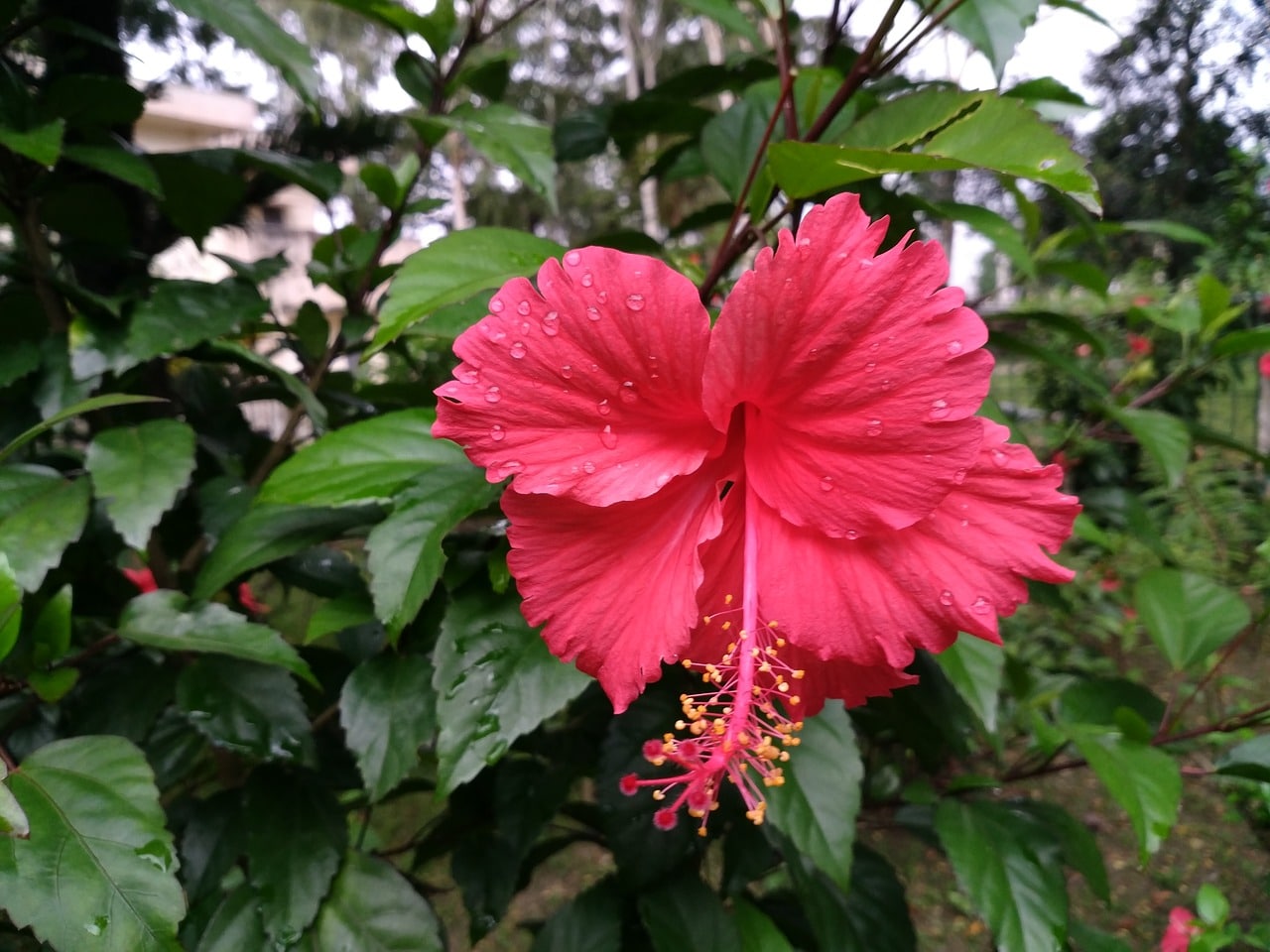
El Hibiscus rosa-sinensis is a species known as China rose, hibiscus, cayenne or poppy (not to be confused with the herb Papaver rhoeas) and is an evergreen shrub native to East Asia. Reaches a height of 2 to 5 meters, with wide and petiolate dark green leaves. The flowers are 6 to 12cm wide, and are of various colors: yellow, pink, red, multi-colored.
Climbers
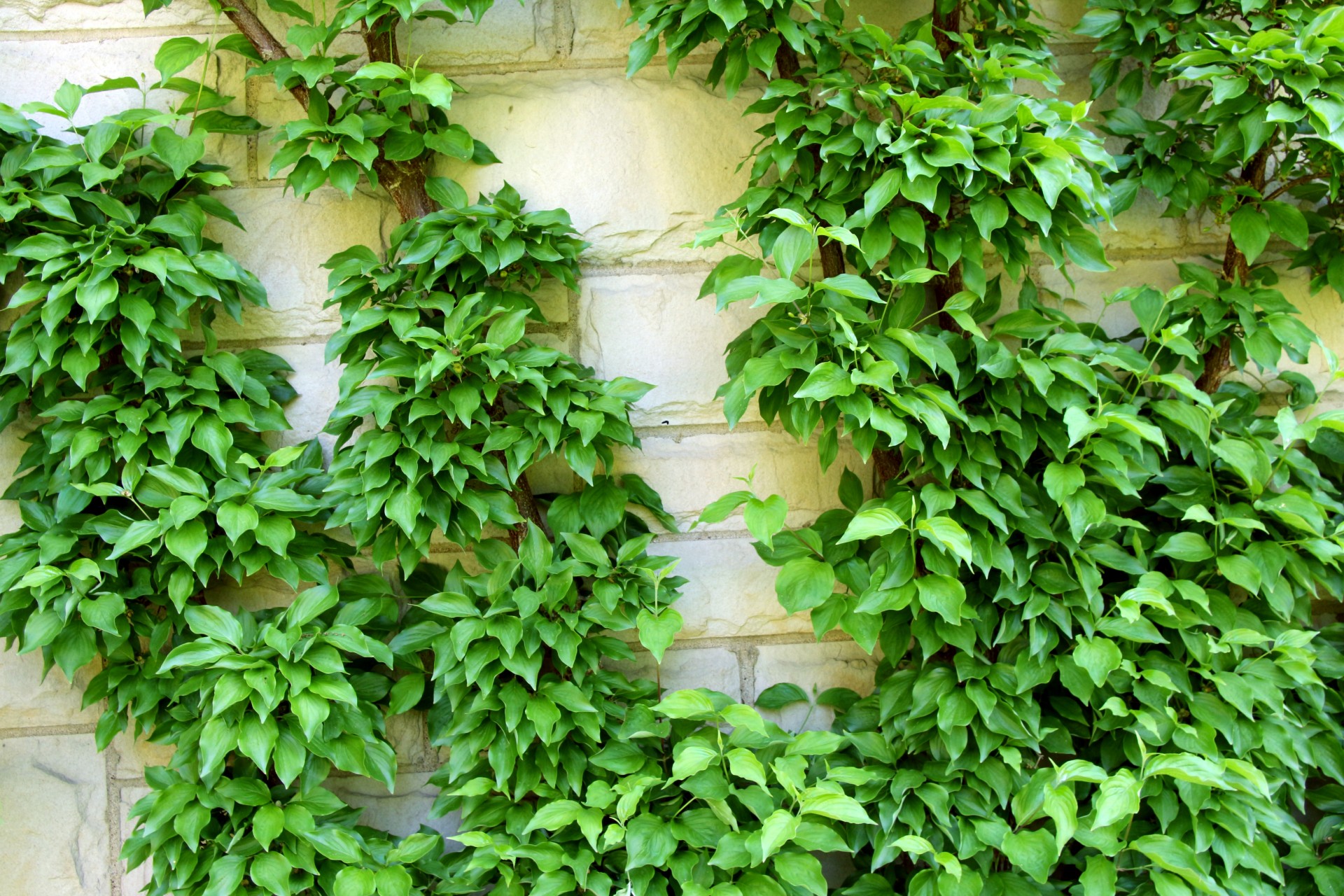
Climbers are those types of plants that grow on top of other plants (usually tall trees) in order to reach sunlight. Depending on the degree of parasitization, we have:
- Epiphytic plants: are those that use others as a support, such as jasmine or bougainvillea.
- Hemiepiphyte: they are those that are epiphytes only during the beginning of their lives, which is when their roots grow downwards and penetrate the soil. From then on, they will become strangler plants, like the ficus benghalensis, or some species of Clusia.
- Hemiparasite: they are parasitic plants, that is, they obtain nutrients from other plants, but they can carry out photosynthesis in a certain way.
There are different types of parasitism:- Forced: when you can't live without a host. Example: Viscum album.
- Optional: when you can end your life whether you have a host or not. Example: Rhinanthus.
- Stems: are those that are fixed on the stem of the host plant.
- Roots: they are those that are fixed in the roots of the host plants.
- Holoparasite: they are those that depend completely on other plants as they lack chlorophyll, without which it is impossible to carry out photosynthesis. Example: Hydnora (root), or European dodder (of stem).
Climbing species
Here we show you some:
Jasminum officinale
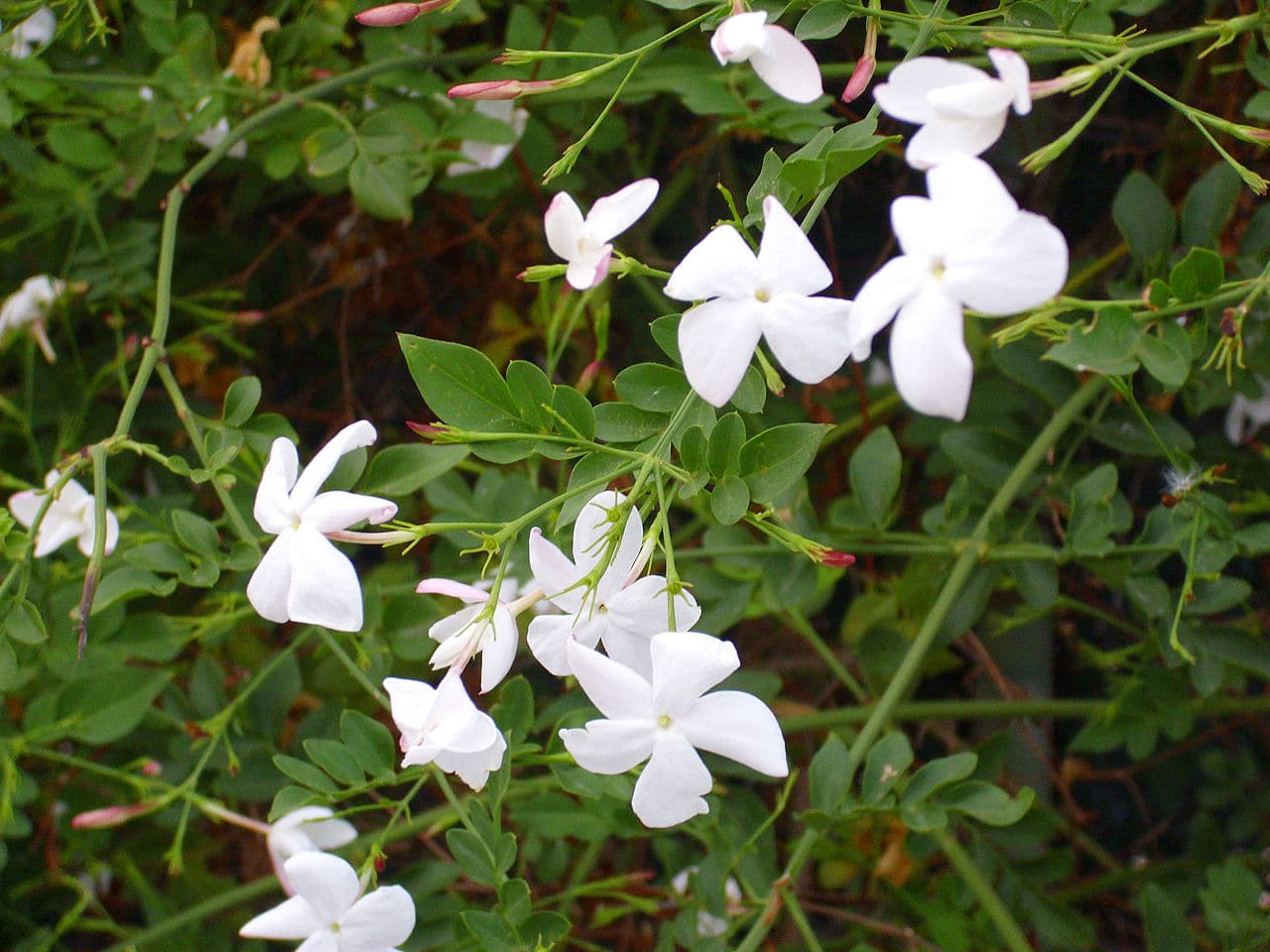
El Jasminum officinale an evergreen epiphyte native to the Caucasus, northern Iran, Afghanistan, Pakistan, the Himalayas, India, Nepal, and western China. Reaches a height of six meters if supported, and its stems sprout leaves composed of 5-9 green leaflets. The flowers are grouped in axillary racemes, and are white.
ficus benghalensis
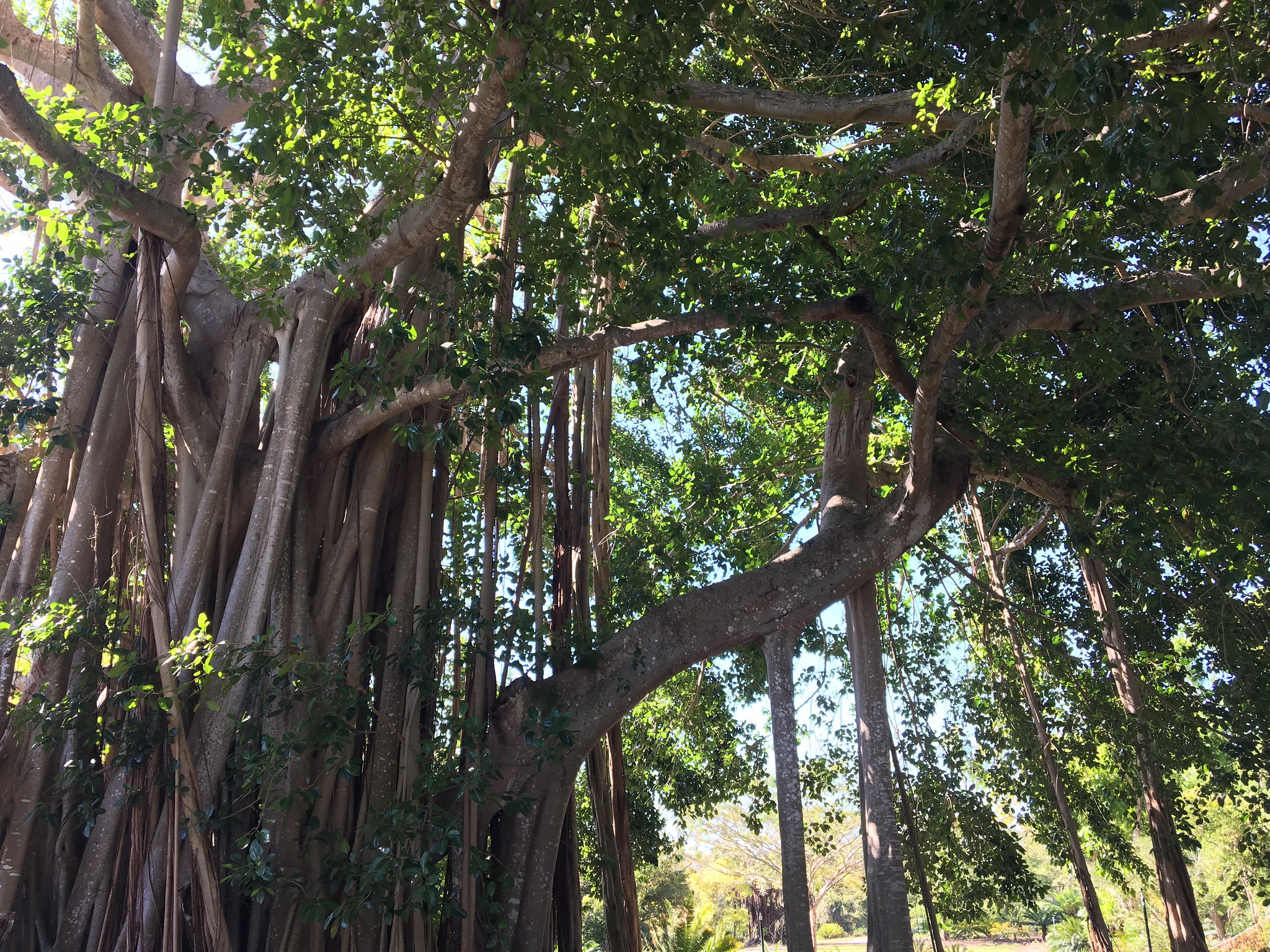
Image – Flickr/Scott Zone
It is known as strangler fig or banyan tree, and it is a hemiepiphyte plant. The seed often germinates in a hole in a branch of a large tree, and when the roots reach the ground the plant begins to grow rapidly, removing nutrients from the host tree.
As it grows, the roots of the fig tree gain in strength, and also in size, and gradually 'strangle' the tree. Over time, the branches of the Ficus have produced so many leaves that the tree that supports it ends up dying from lack of light ... and nutrients. Once it happens, its trunk rots, but the fig tree has formed such a solid network of roots that it does not fall, but forms a kind of hollow trunk.
This plant murderess it is endemic to Bangladesh, India, and Sri Lanka. Its size is variable, but it can extend for several thousand meters. In the Botanical Garden of Calcutta there is one that is estimated to be more than 230 years old, and occupies an area of 12.000 square meters.
Viscum album
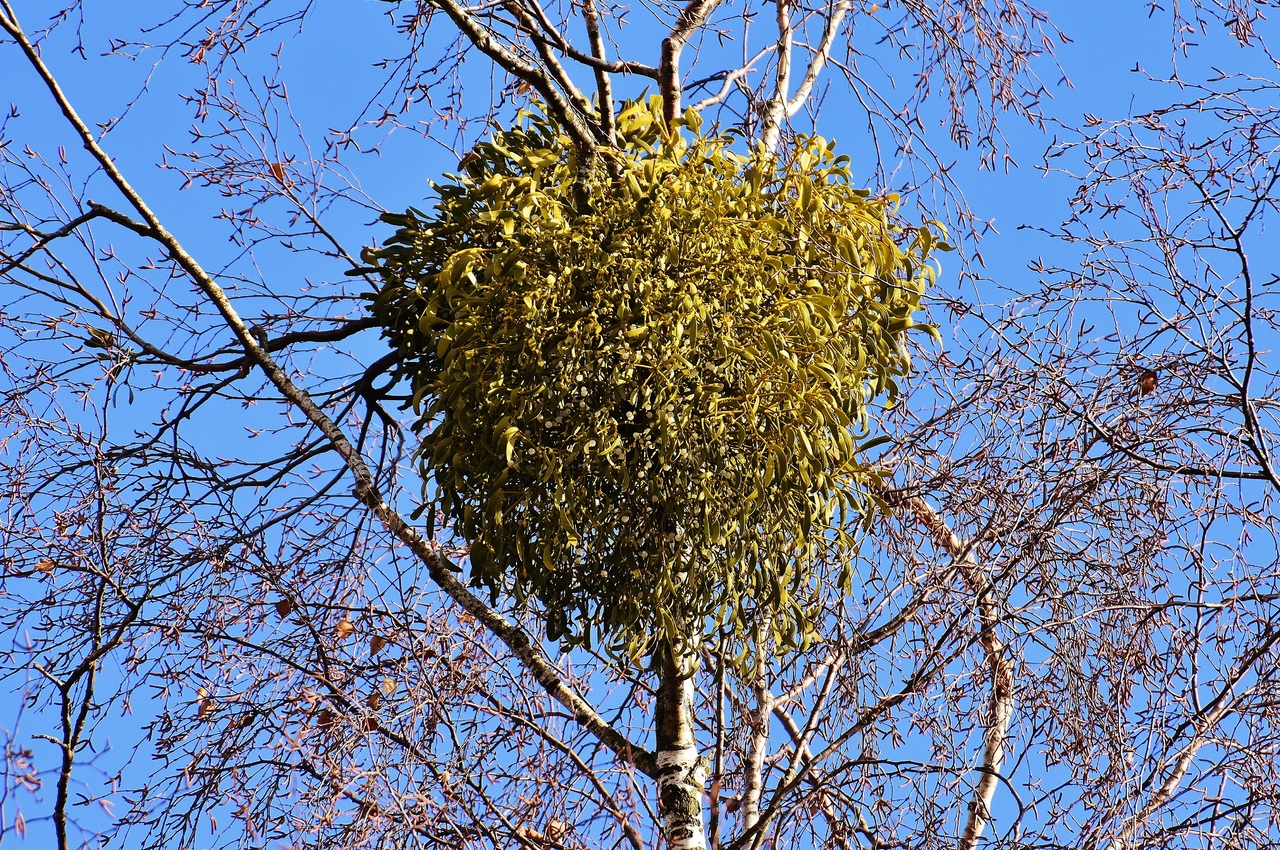
Known as white or slimy mistletoe, the Viscum album It is an obligate hemiparasitic plant native to Europe, Western and Southern Asia, and America. It grows on the branches of deciduous trees, such as the poplar, although it is also seen on some Pine trees. It develops dichotomous stems up to 1 meter long, and its leaves are greenish-yellow, 2 to 8cm long.. Its flowers are greenish-yellow, and measure 2-3mm in diameter. The fruit is a small white, yellow or translucent berry.
Succulent

Image - Flickr / Pamla J. Eisenberg
They are plants that have adapted to living in some of the warmest and driest areas in the world. Although there are trees, shrubs and other types of plants that have some succulent part, as such we refer only to cacti and succulents. The origin of these dates back to the Cretaceous period, between 80 and 90 million years ago. At that time they were plants with leaves, flowers and seeds, which lived in what is now South America and Africa, but which was once Gondwana (it was a former continental block made up of the continental masses of present-day Africa, South America, Australia , New Zealand, Hindustan, Madagascar and Antarctica, which originated with the partition of Pangea in two more than 200 million years ago).
Due to the constant movement of the tectonic plates, little by little and over the thousands and millions of years, South America and Africa were separated, being slowly carried to their current geographical location. In doing so, the climatic conditions of those places changed, forcing American succulents to adapt by modifying their leaves for foliar spines and to have a body capable of photosynthesis; On the other hand, the African women turned their leaves and / or stems into 'stores' of water.
Thus, the American ones gave rise to cacti, and the latter to succulents.
In the modern era we can see these plants in desert or near desert regions. For example, in countries like Mexico, Chile and Argentina, there is a great diversity of cacti. For example, of the more than 350 species of Mammillaria that are accepted, which is the most extensive genus of cactus, most are native to Mexico. On the other hand, Lithops are one of the largest genera of succulents, as it is composed of 109 species, all of them native to southern Africa.
Succulents are plants that they are prepared to withstand the high temperatures typical of deserts, and they do not want much water. That is why they are so popular, since they also do not usually grow very much (with few exceptions). The normal thing is that they do not exceed 40, 50 or 60 centimeters in height, although there are some species of columnar cacti, such as the The giant carnage (saguaros), which exceed 5 meters.
Differences between cacti and succulents
It is very easy to confuse them, because yes, we know that cacti have thorns ... but in certain cases it is not like that (such as Astrophytum asterias). So so that there is no room for doubt, tell you that what you have to look at to know if it is cactus or crass is in the following:
- Areola: thorns and flowers sprout from them, and are generally hairy. They are only present in cacti.
- Ribs: the ribs can be more or less marked, and be more or less irregular. Both cacti and some succulents can have them, but in the former they are much better distinguished.
- Leaves: they are fleshy, usually light in color. Only a few suckers have them.
Succulent plant species
Here we show you some:
Copiapoa cinerea
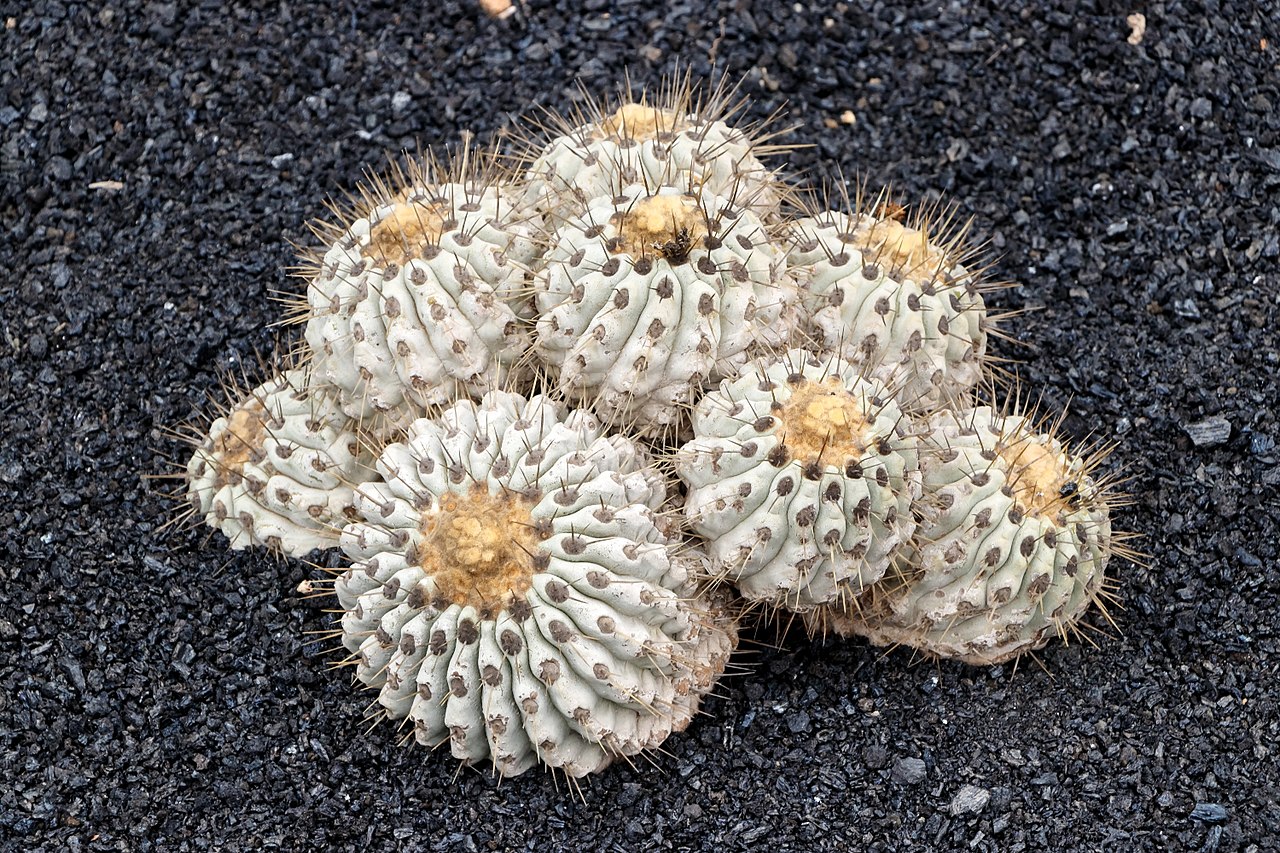
Image - Wikimedia / H. Zell
La Copiapoa cinerea It is a species of cactus with a globose-cylindrical body well armed with thorns. The flowers are yellow, and sprout from the apex of the stem. It is endemic to Chile, and can reach a height of about 50-60 centimeters.
echeveria elegans
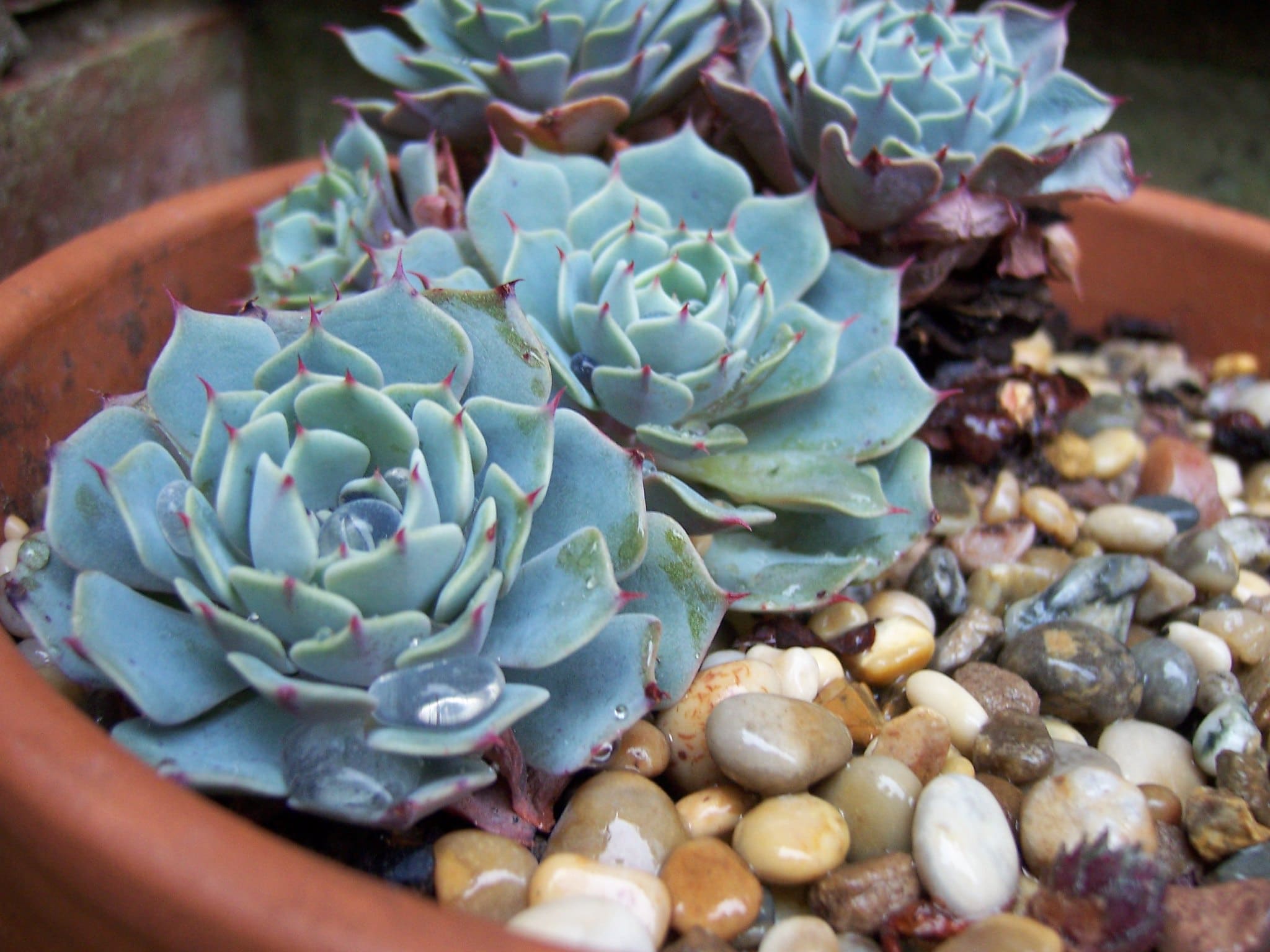
Image - Flickr / stephen boisvert
La echeveria elegans is a succulent plant native to central Mexico that forms a rosette of leaves up to 10 centimeters in diameter, without stem / trunk. Its flowers sprout from a short flower stalk, and are orange.
And with a brief reflection we finish:
It is interesting to know the plants, but also it is very important to respect them. It is currently being deforested at too fast a rate. If we continue like this, when we realize that money cannot be eaten, it will be too late.
They would tell me what flowers exist